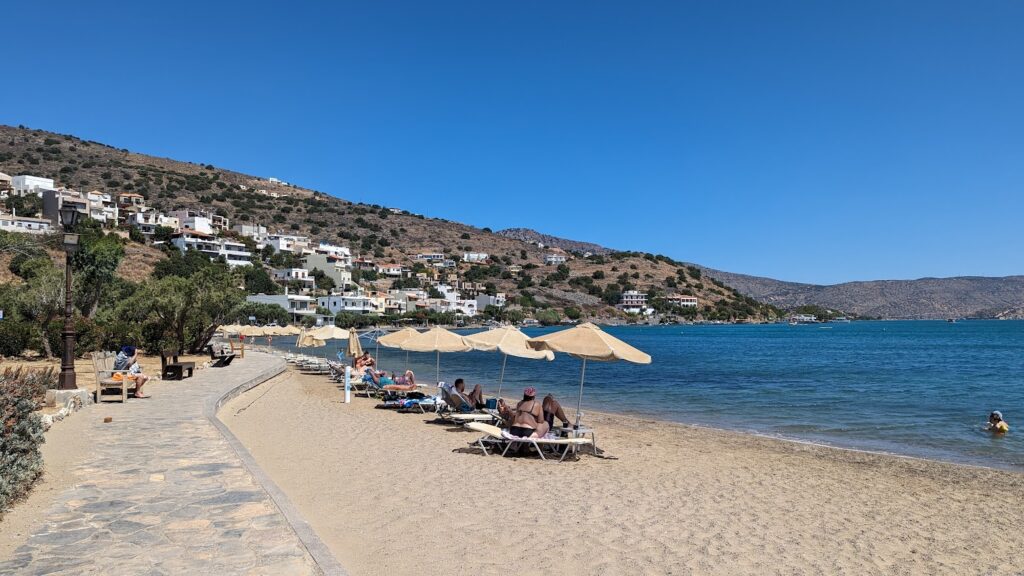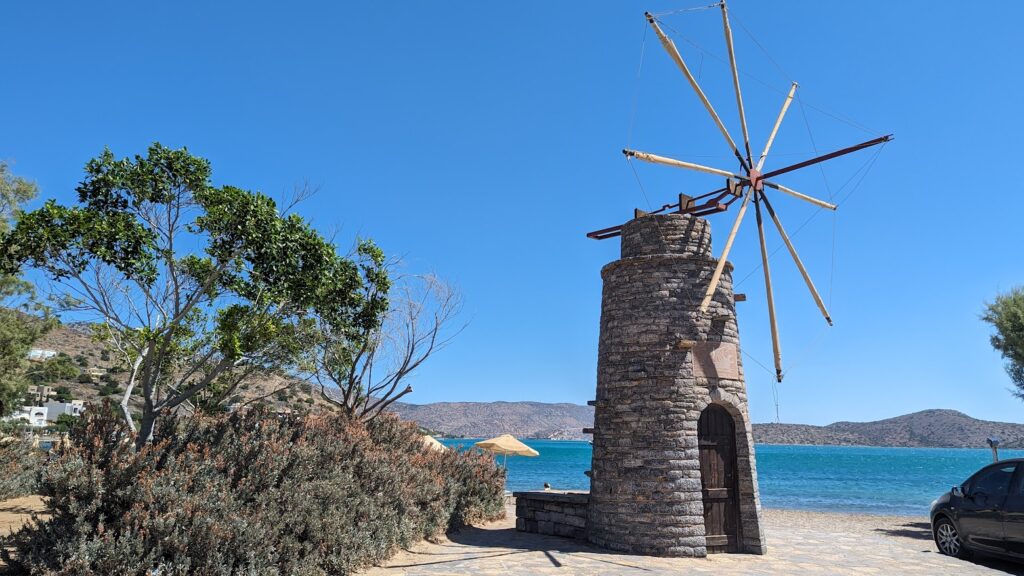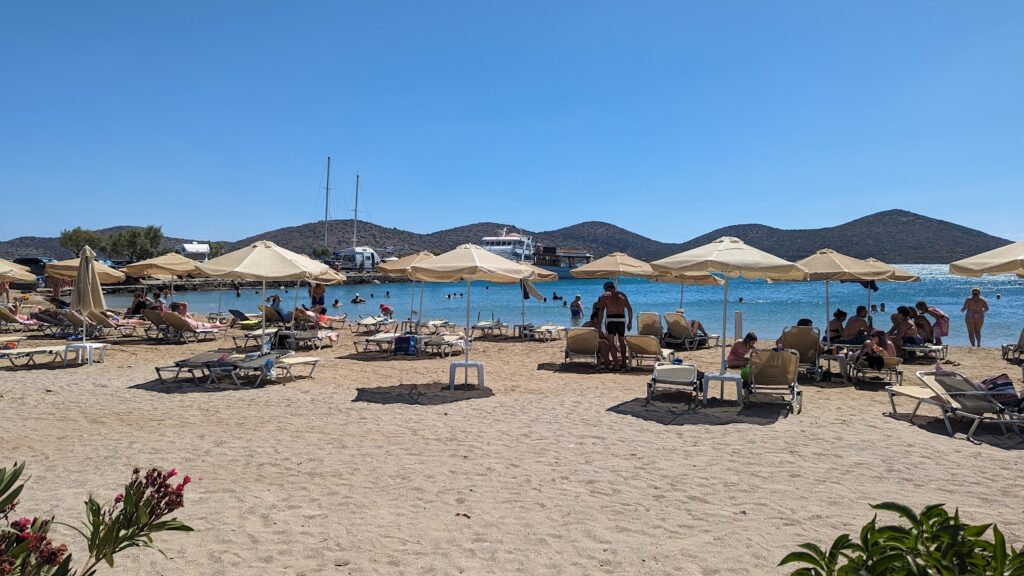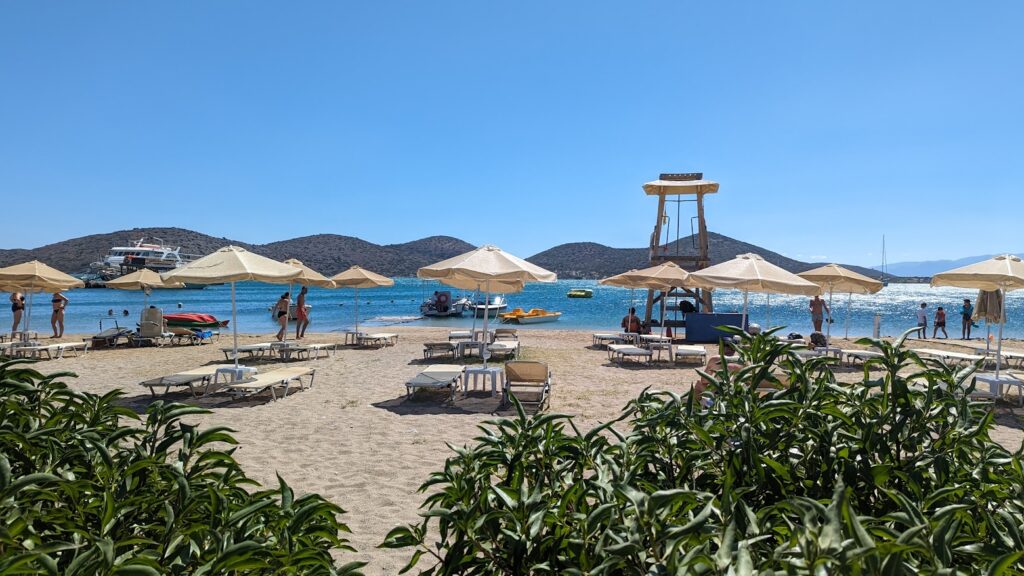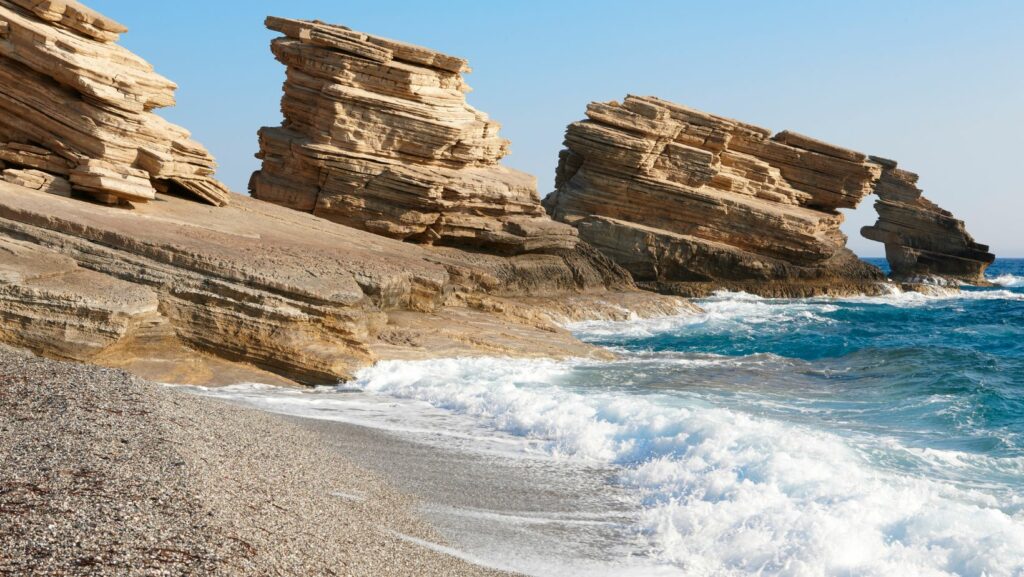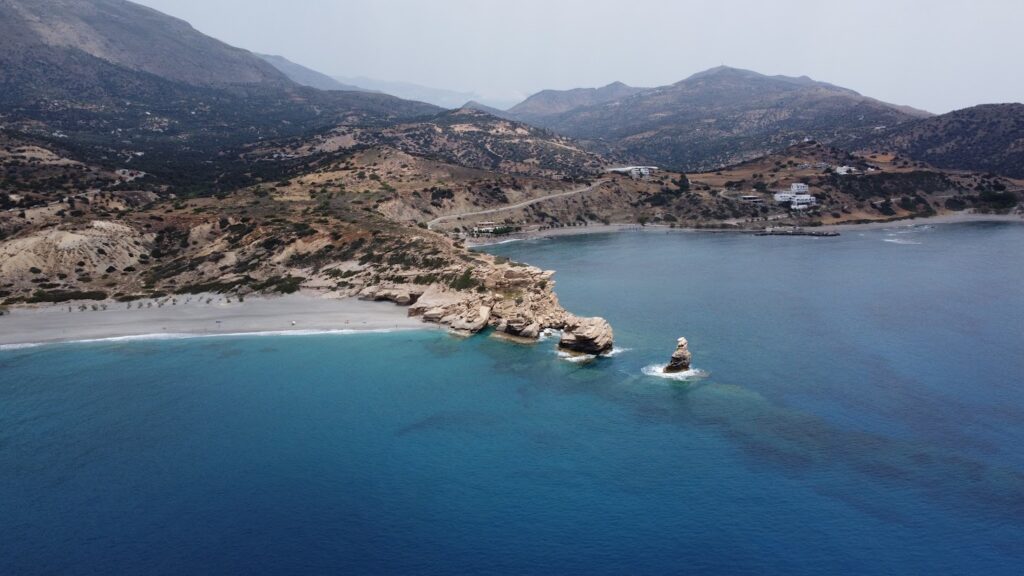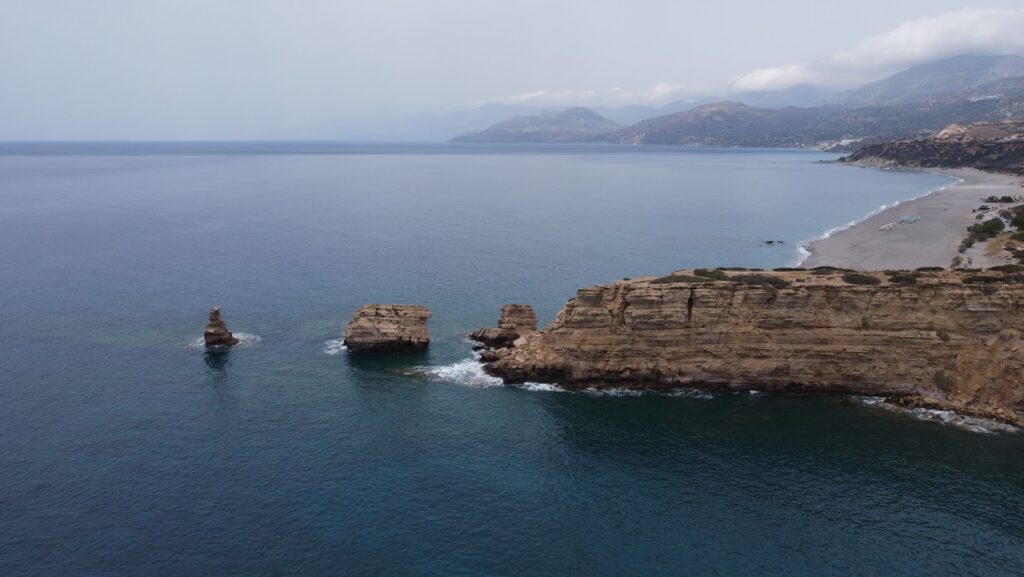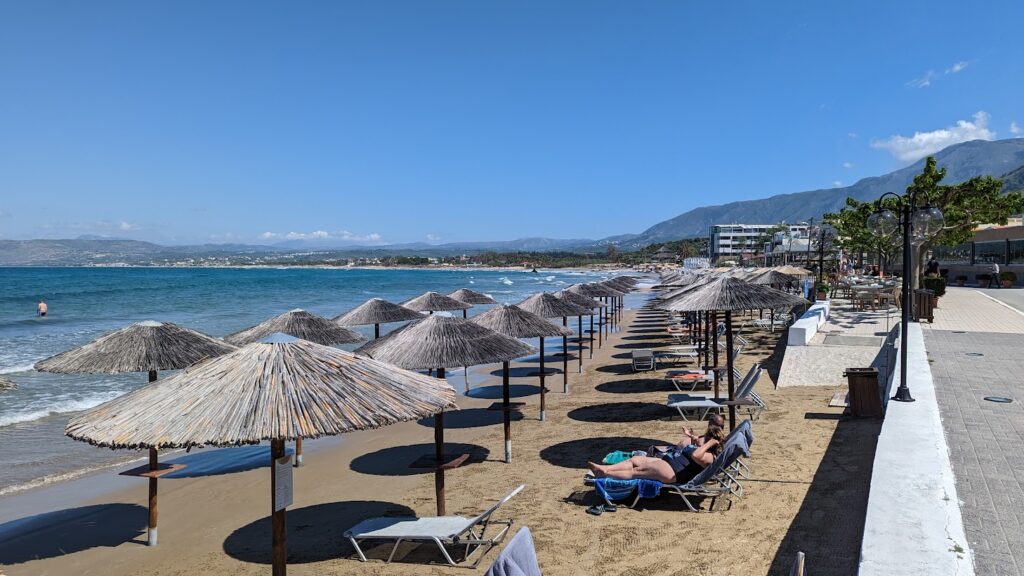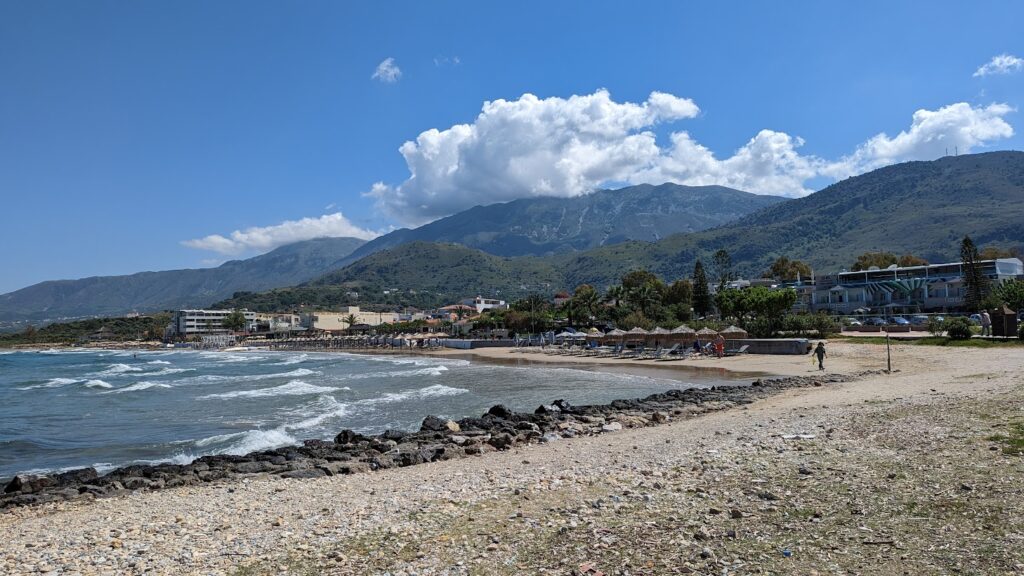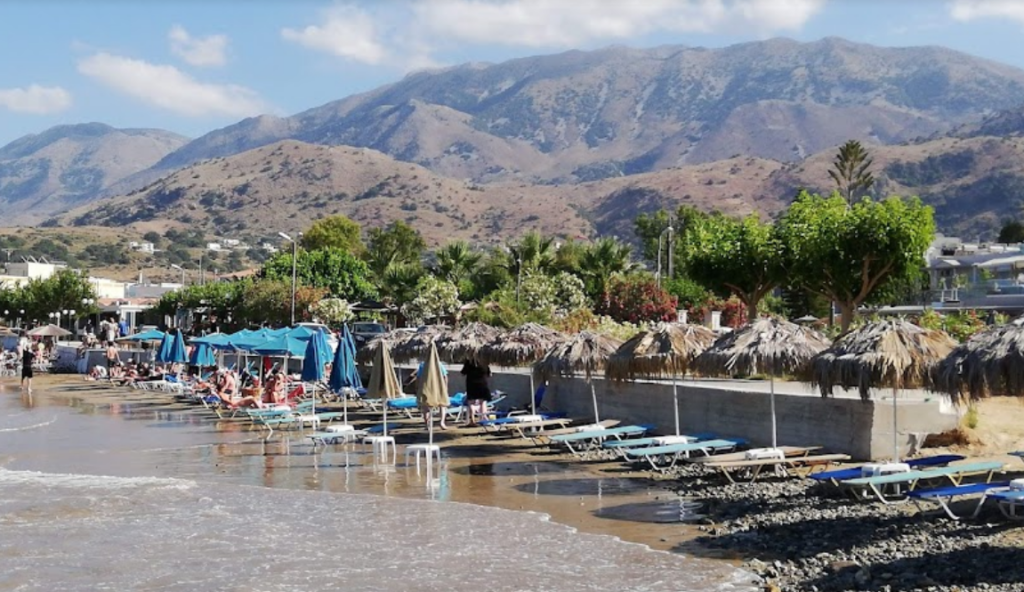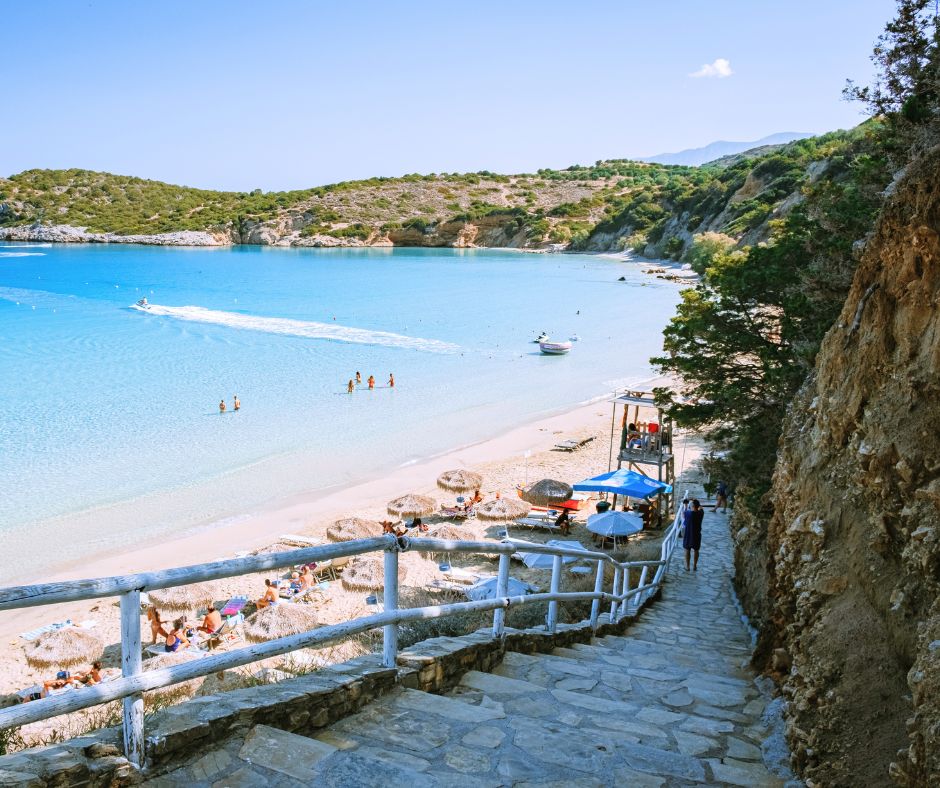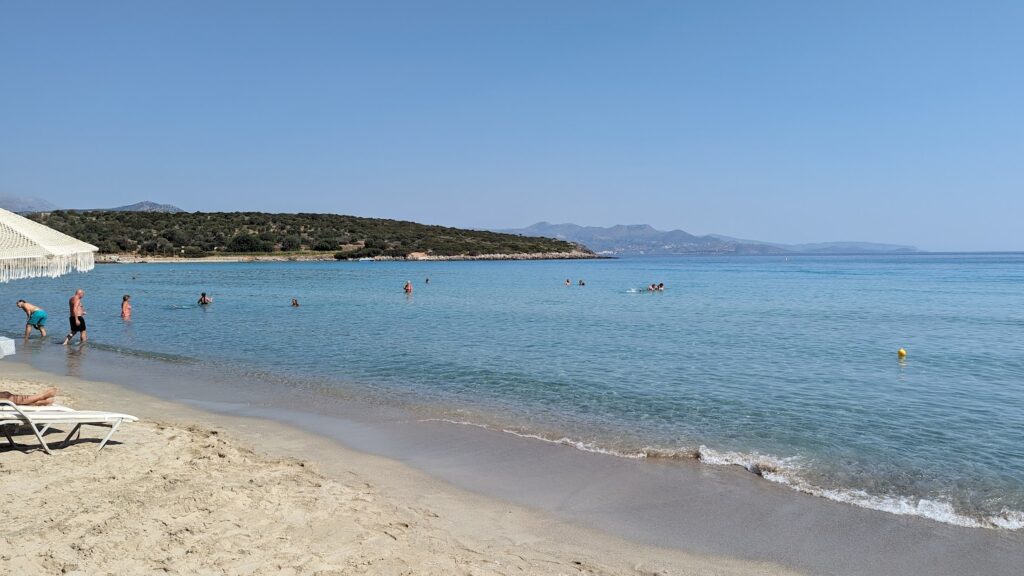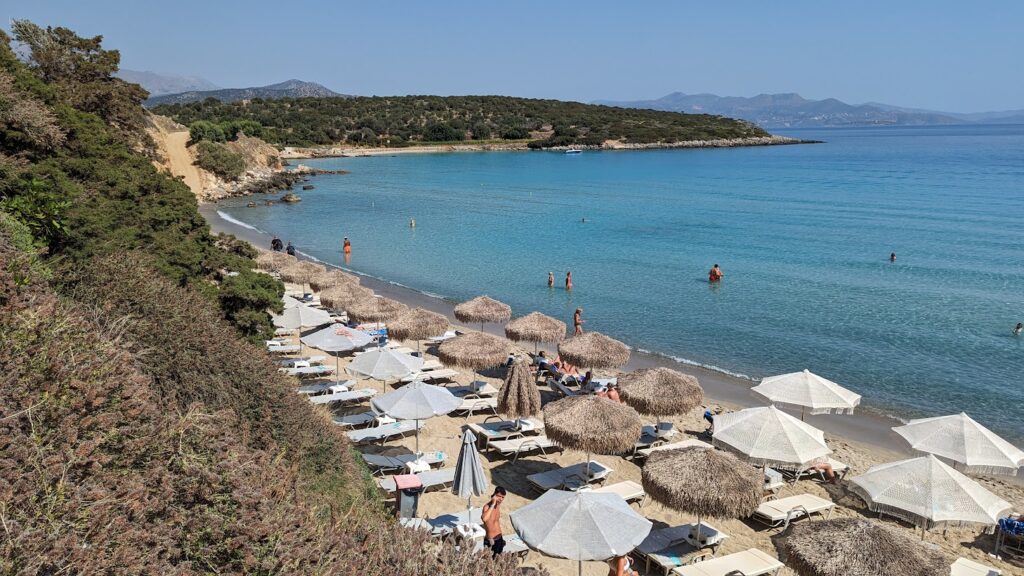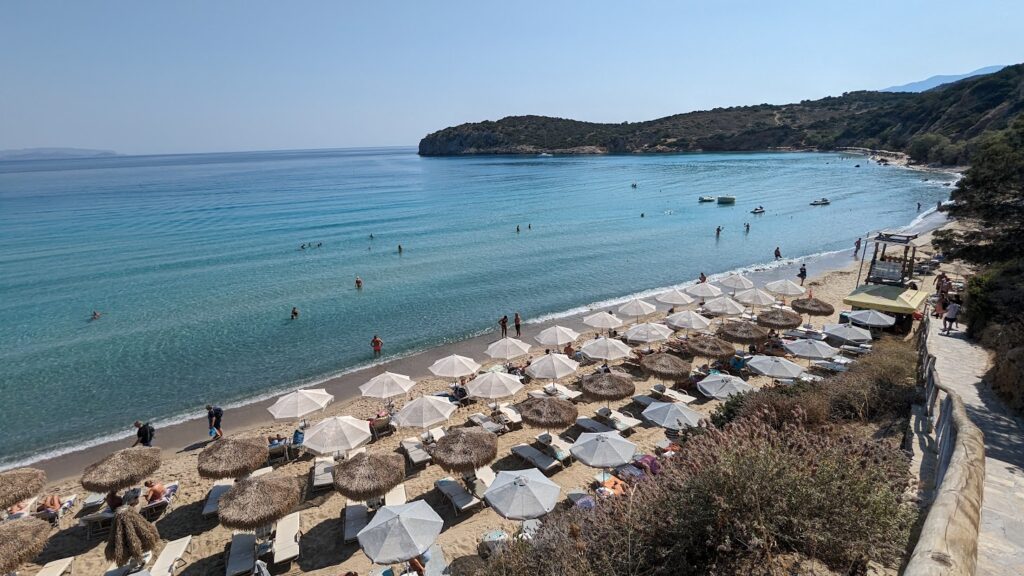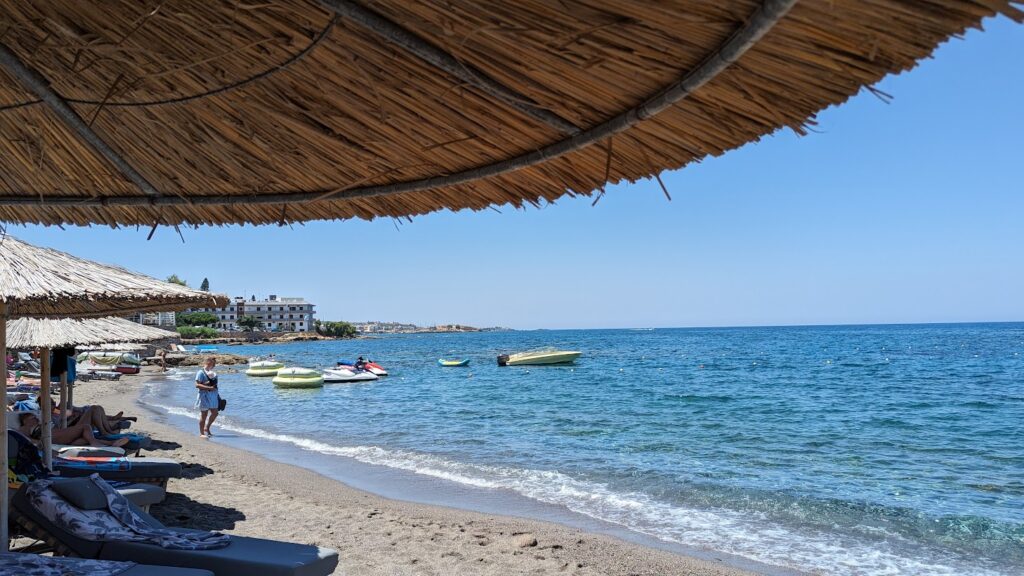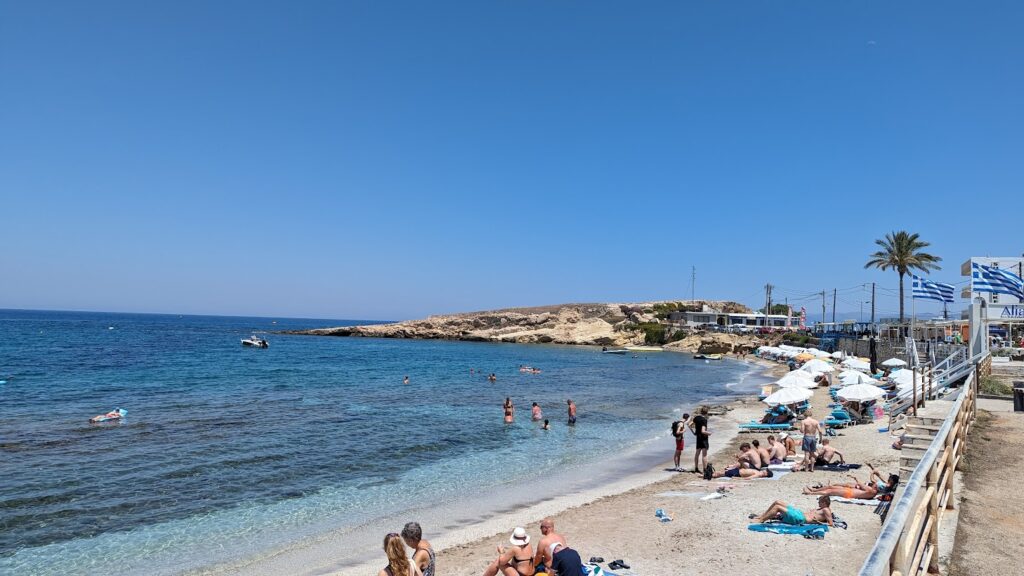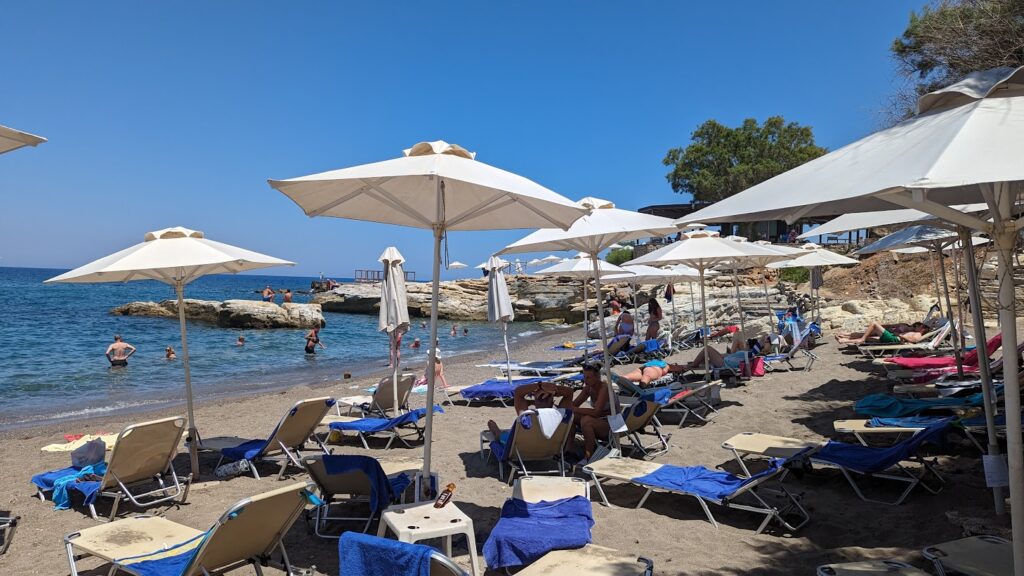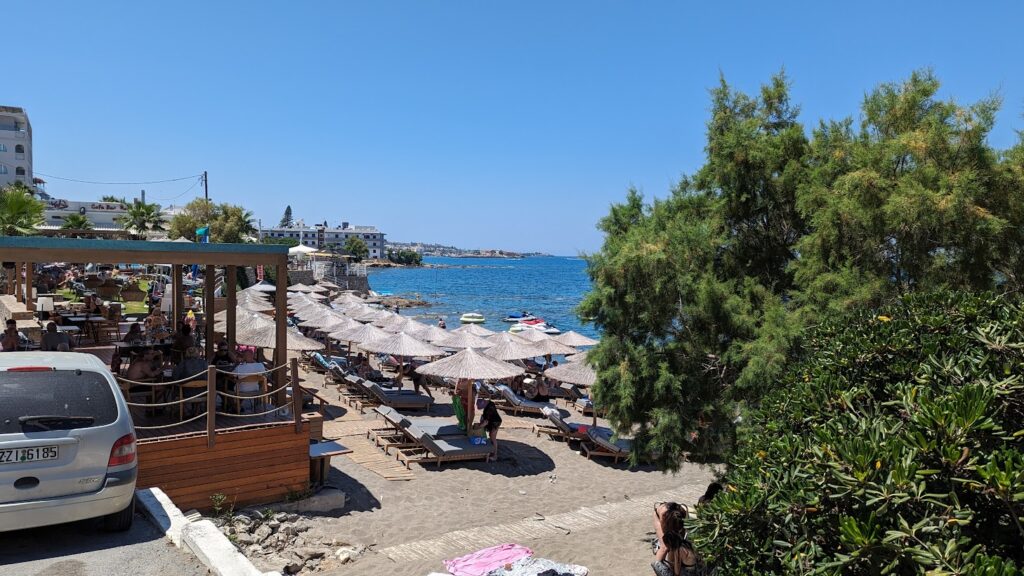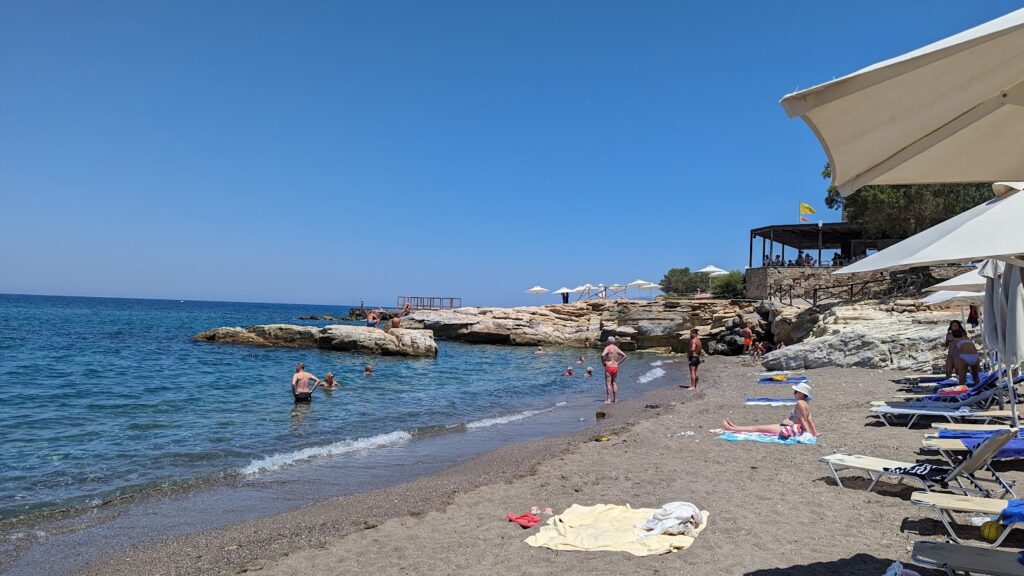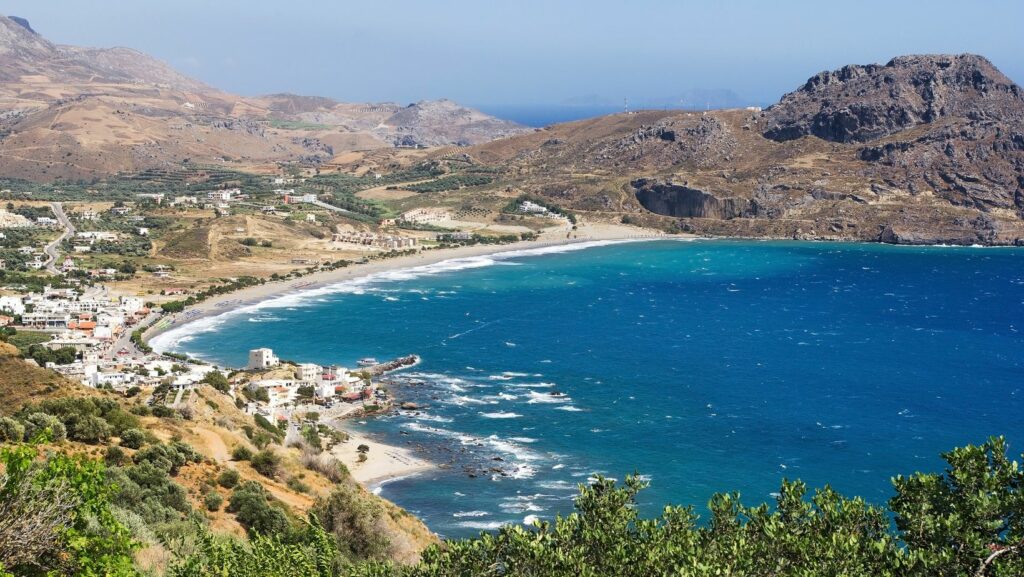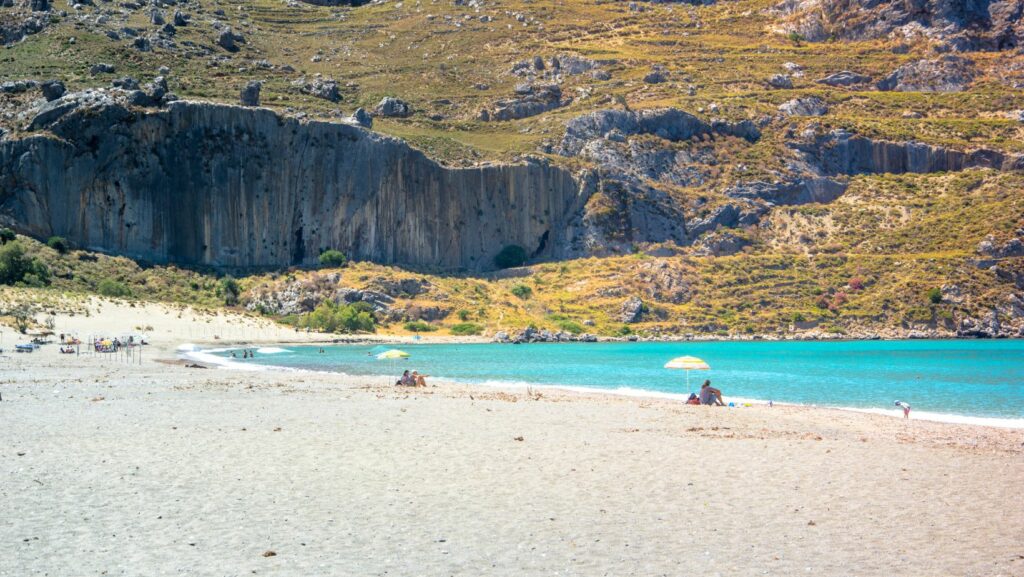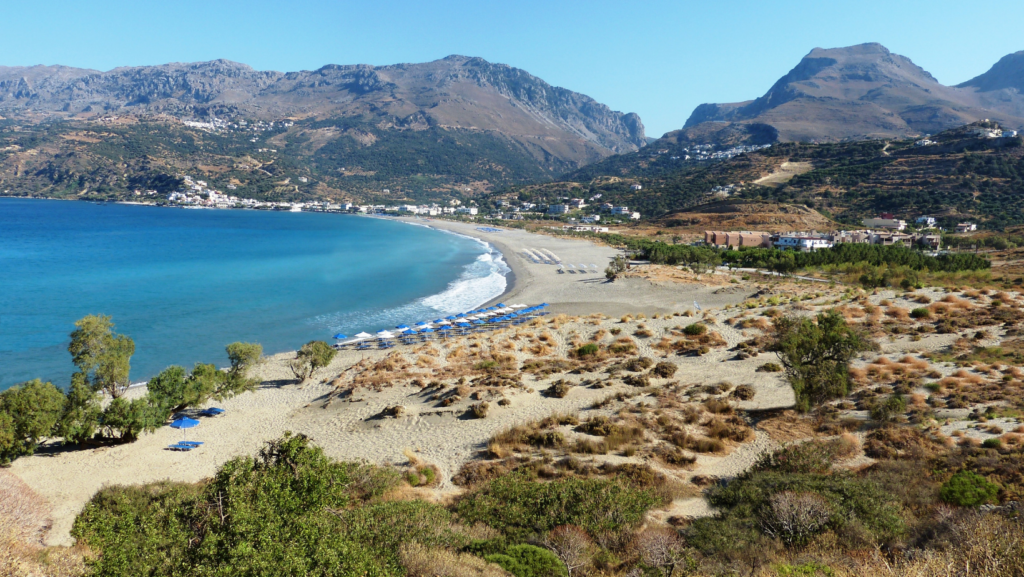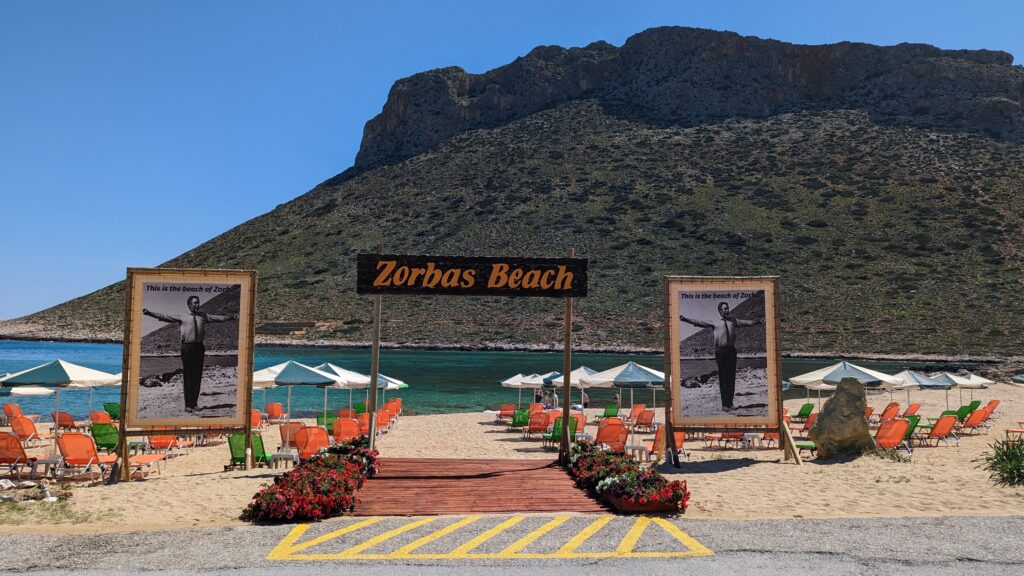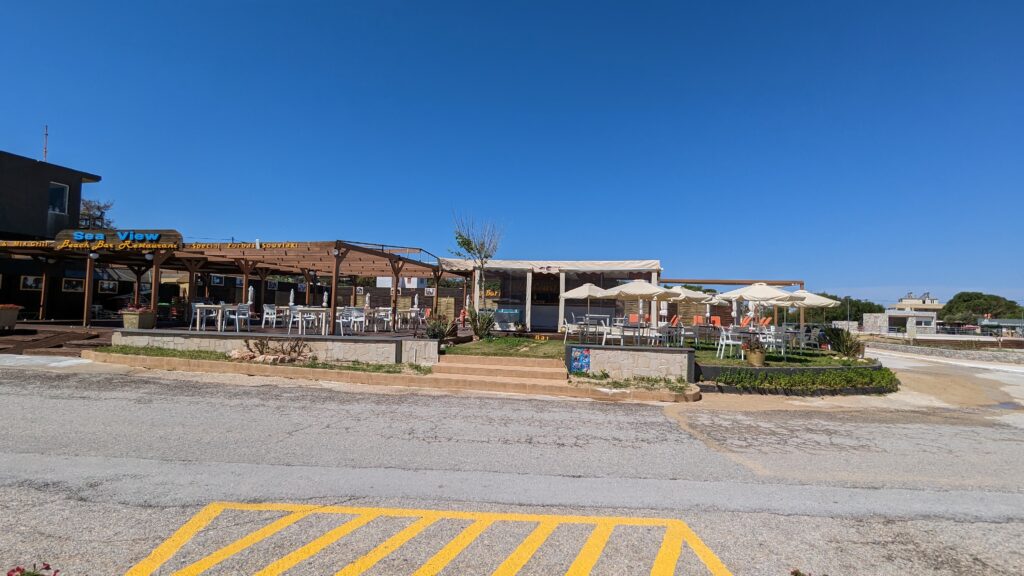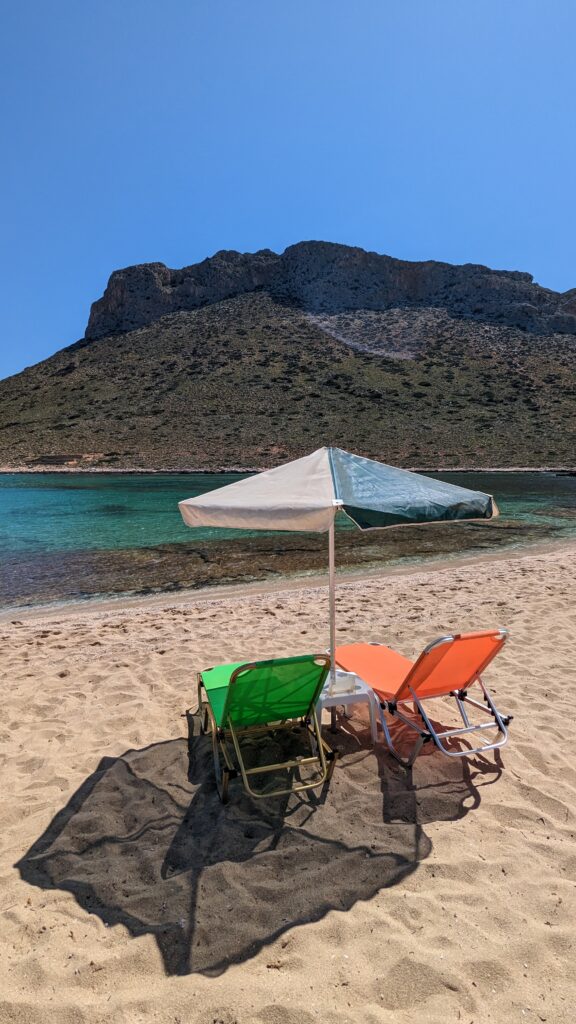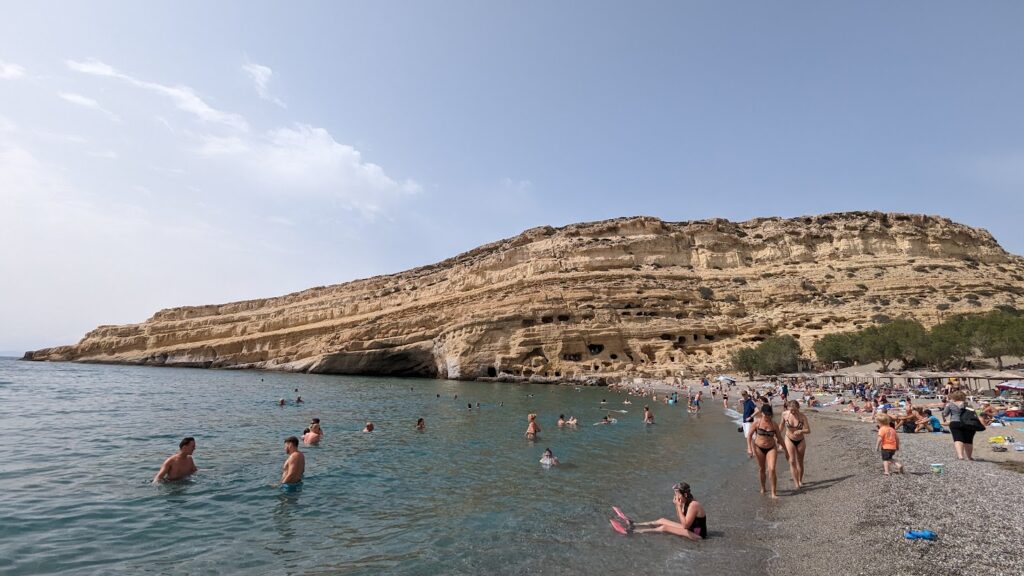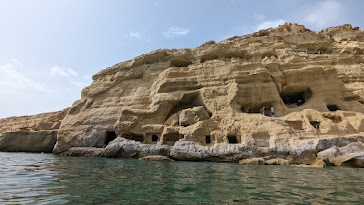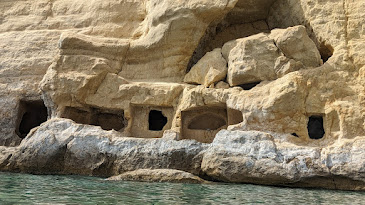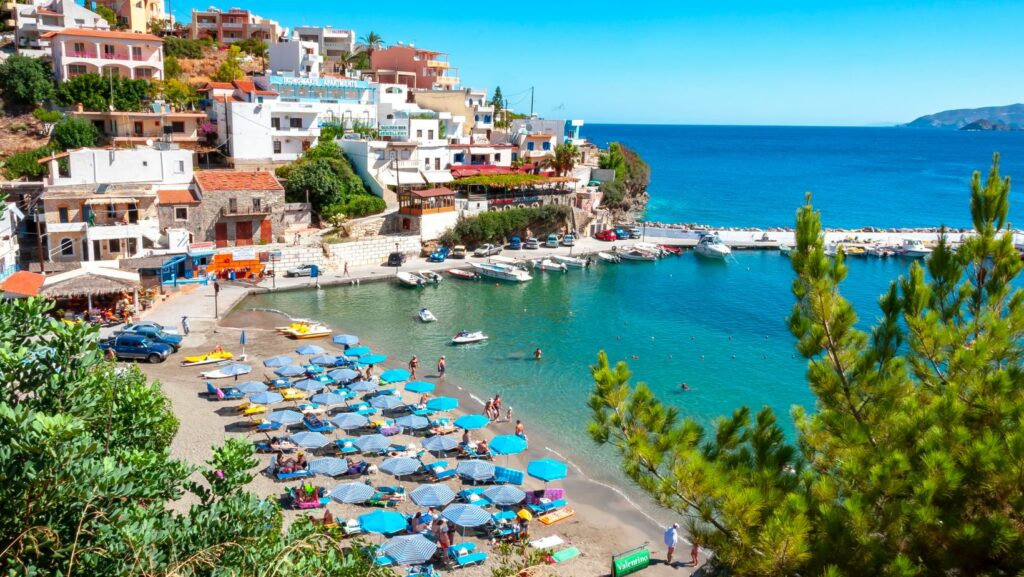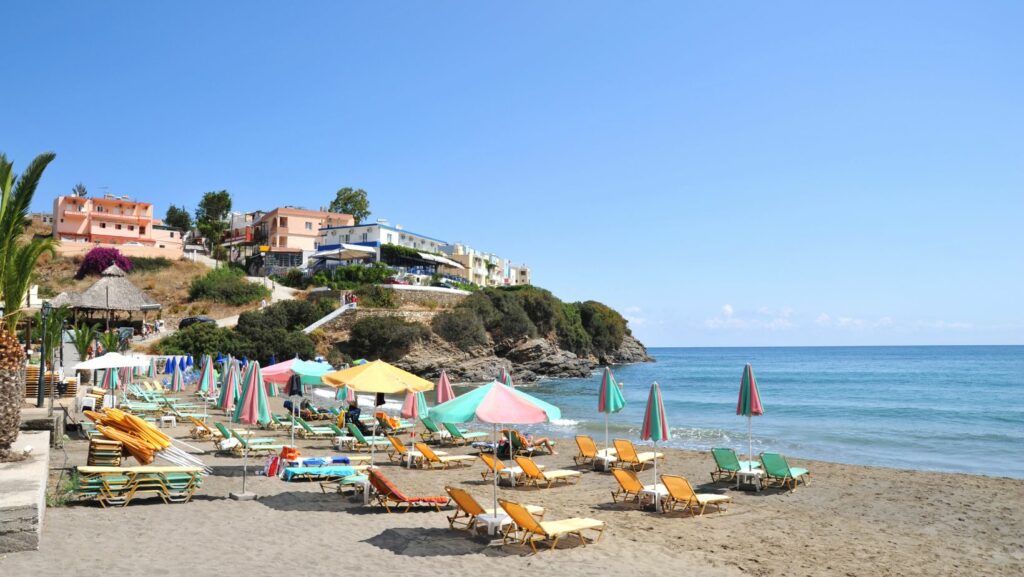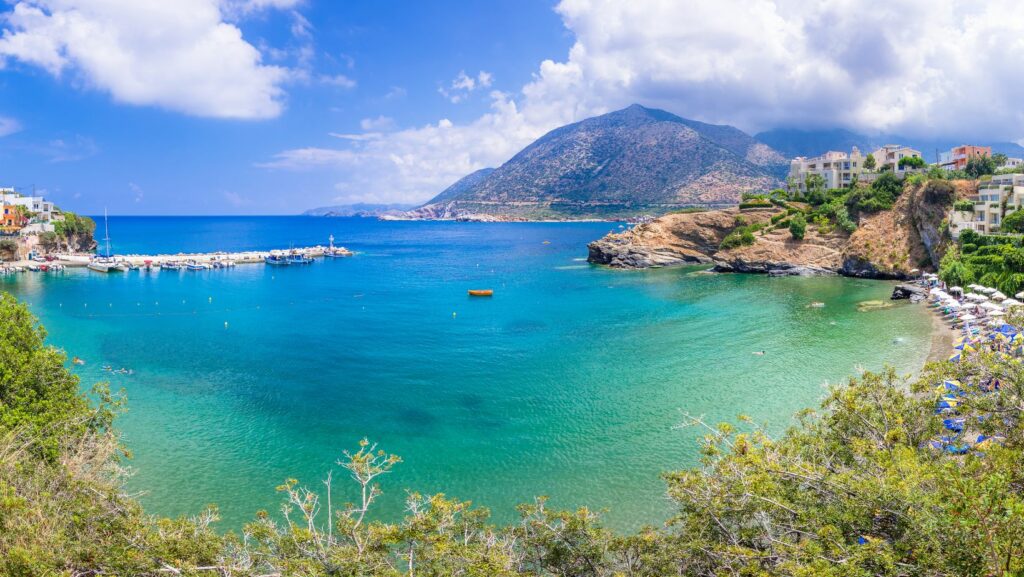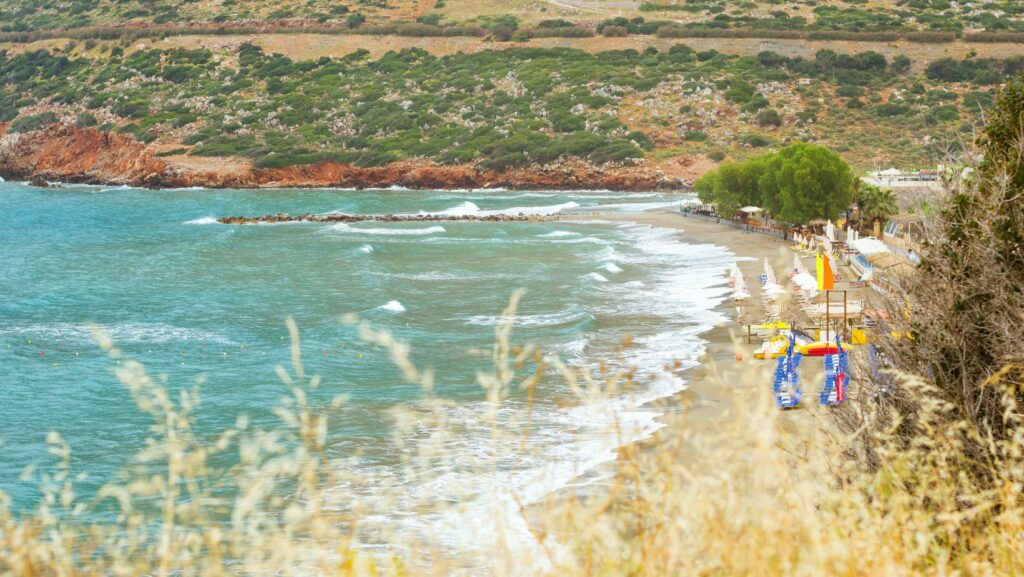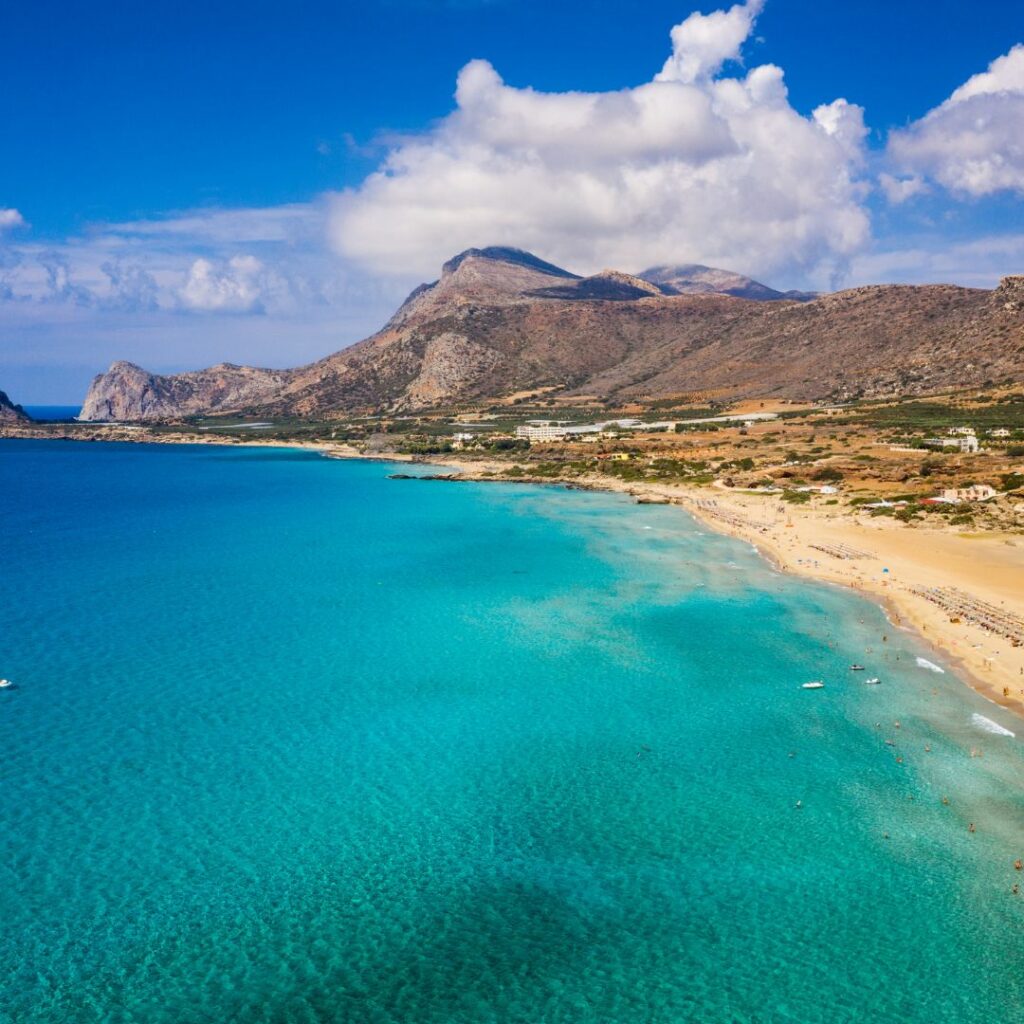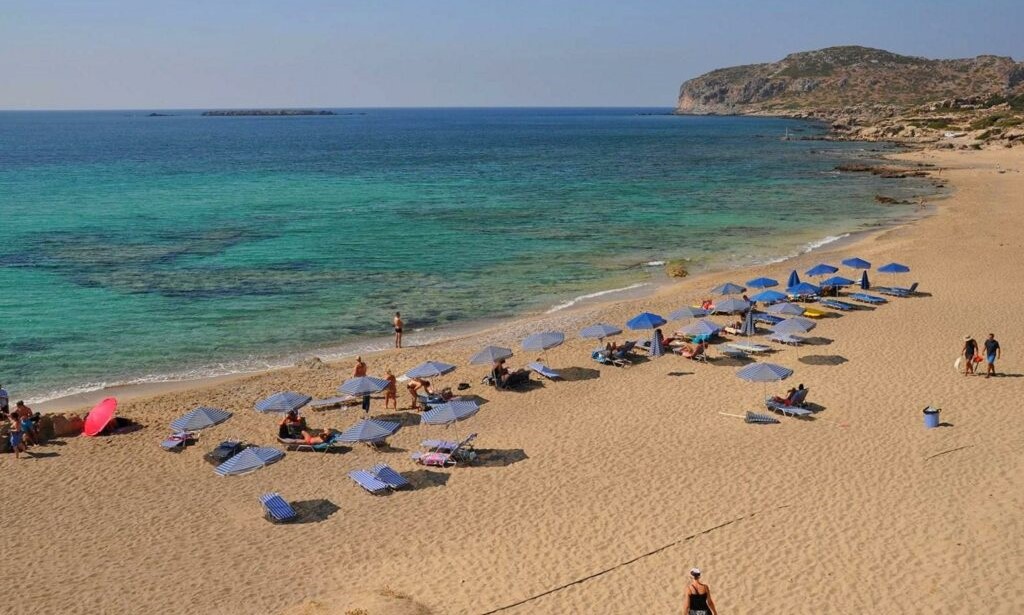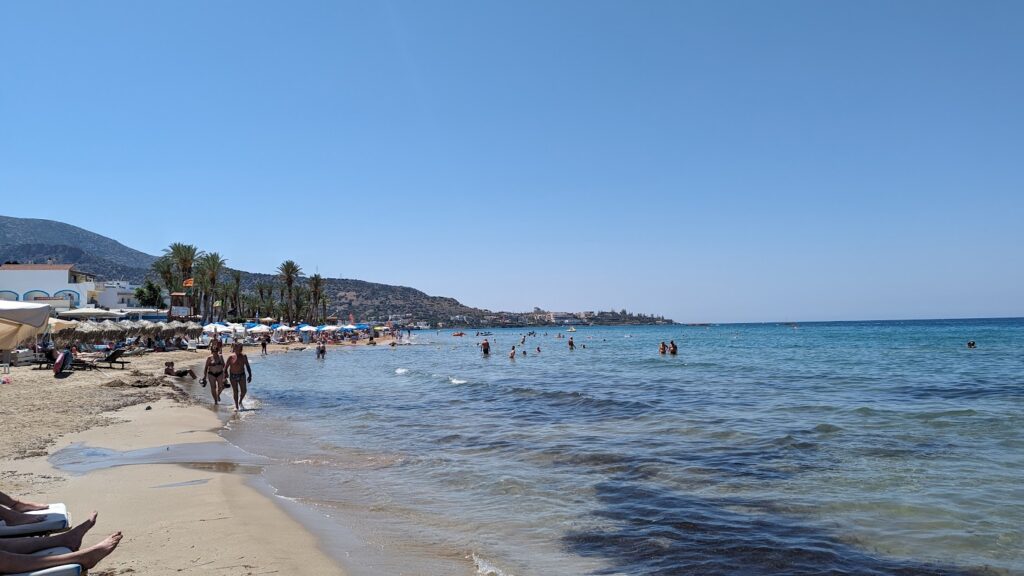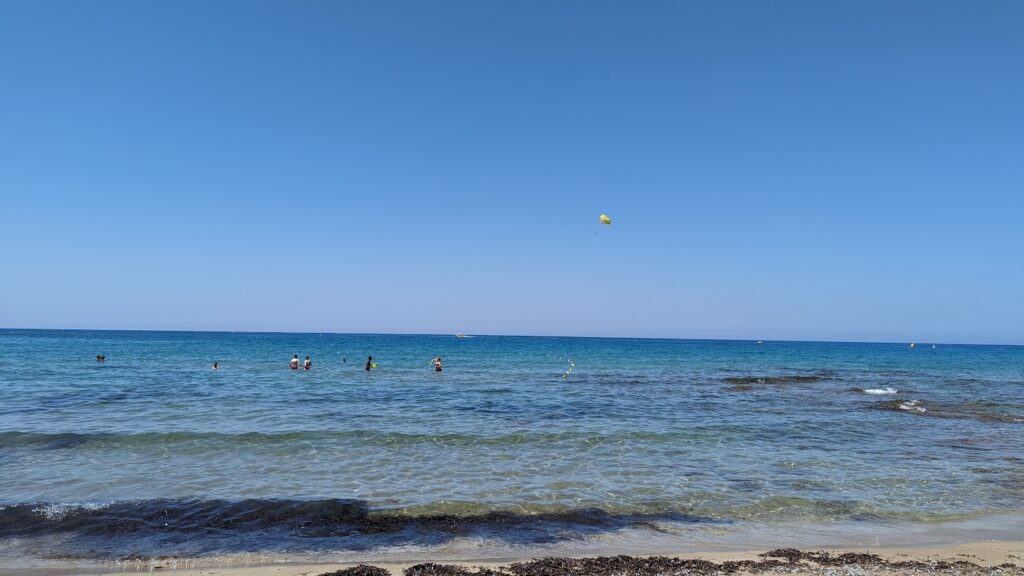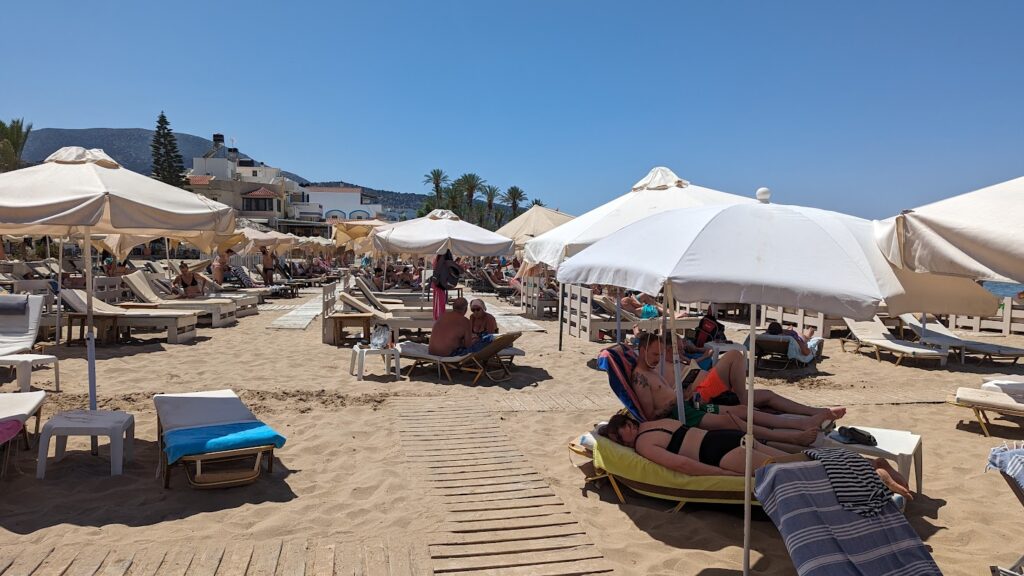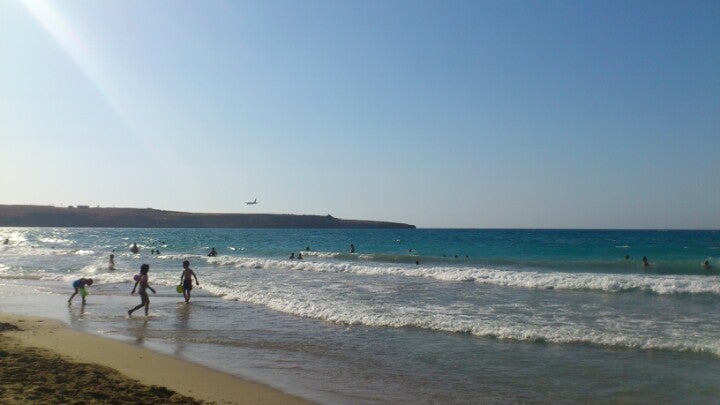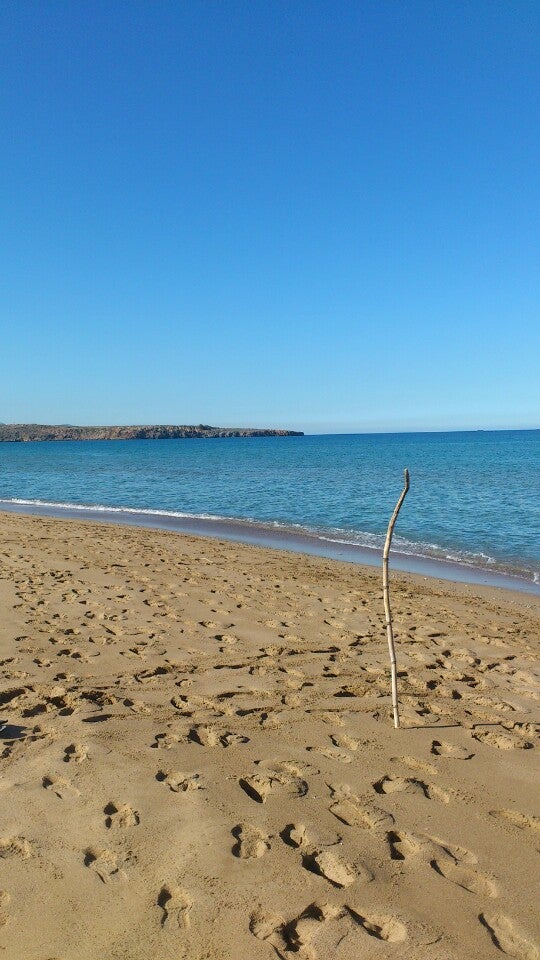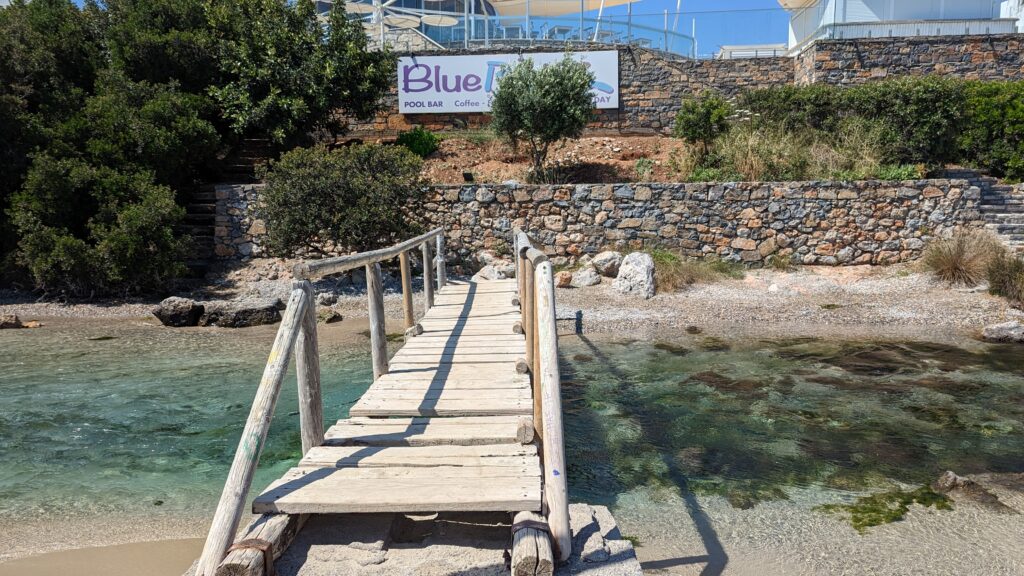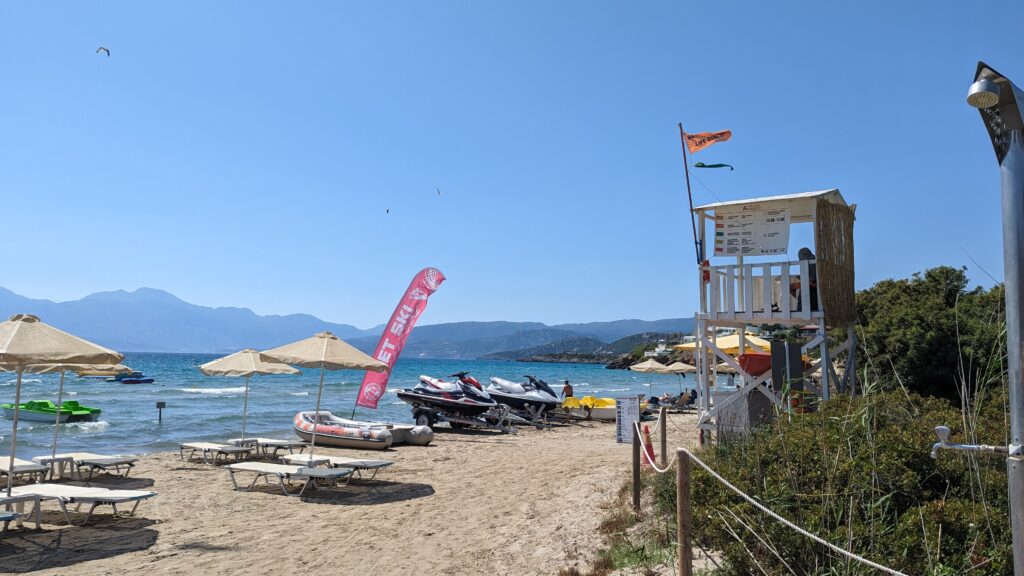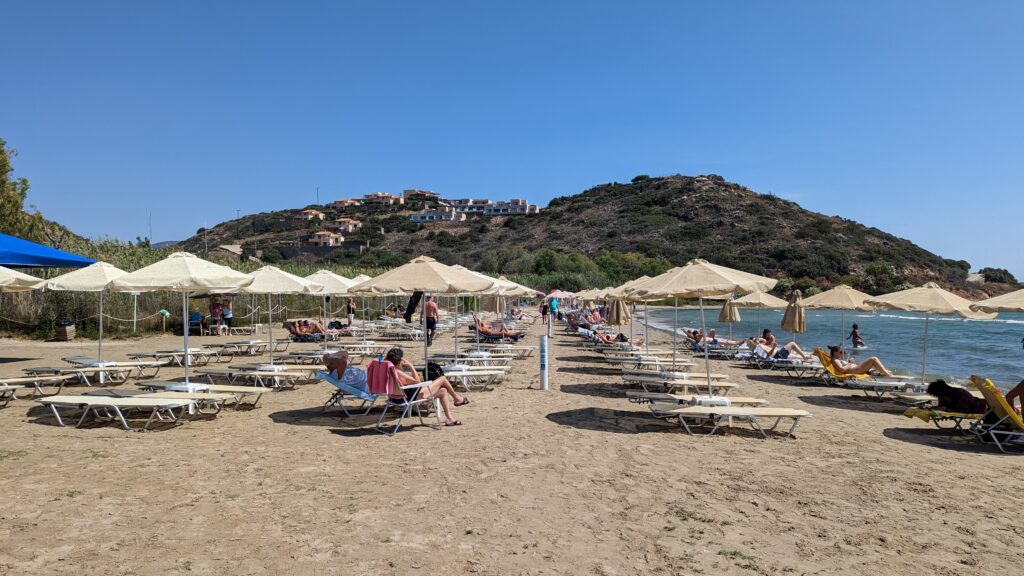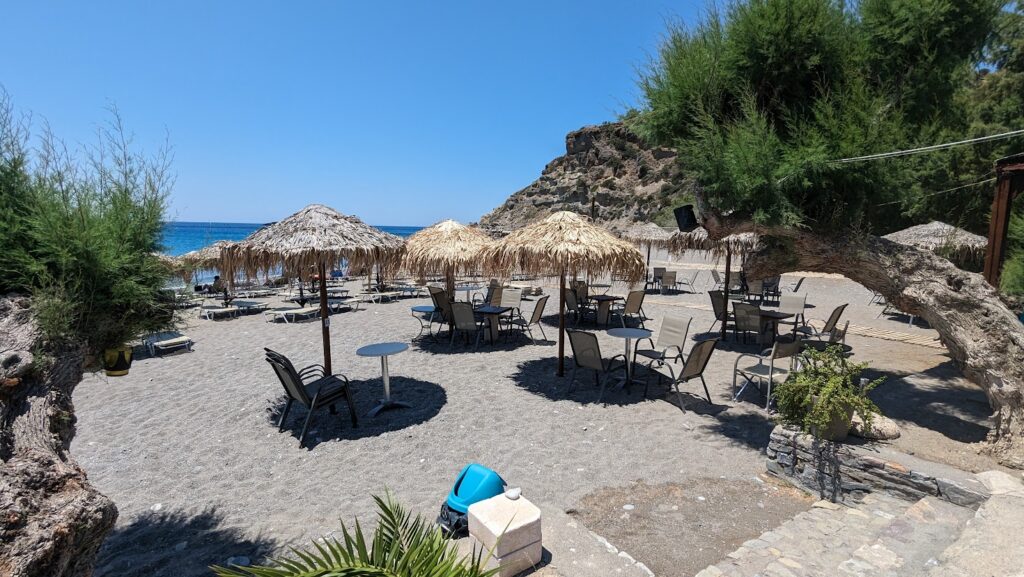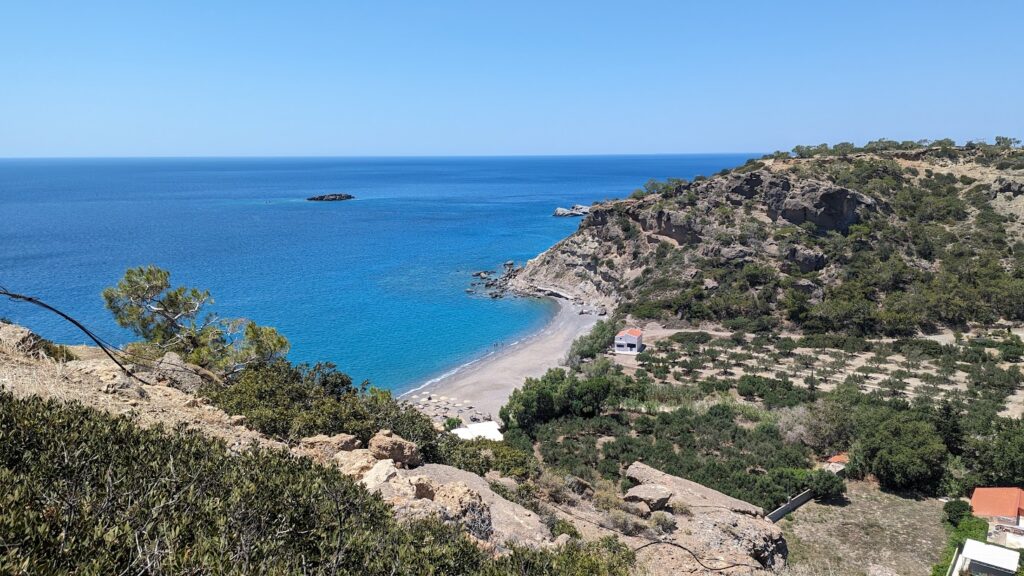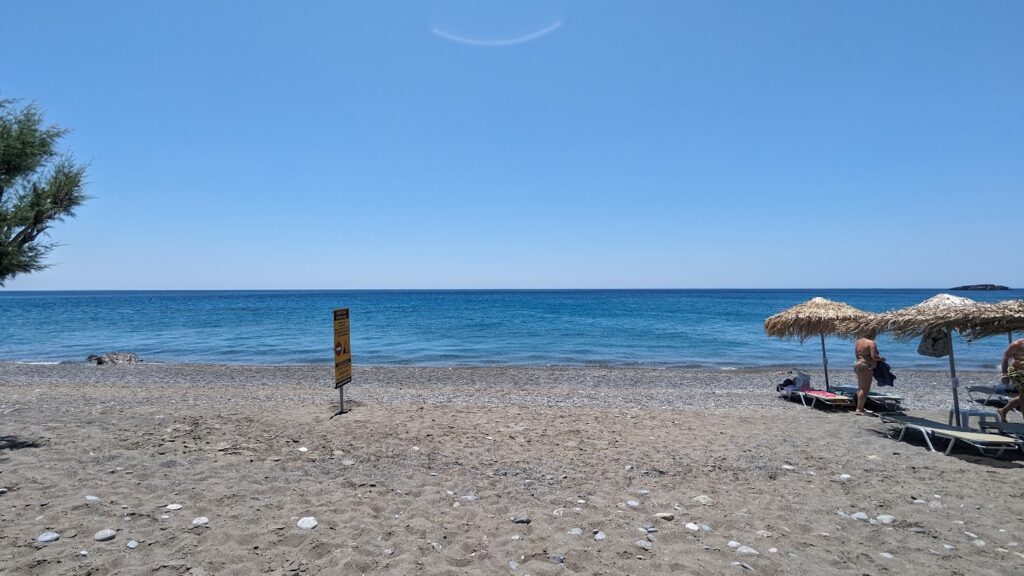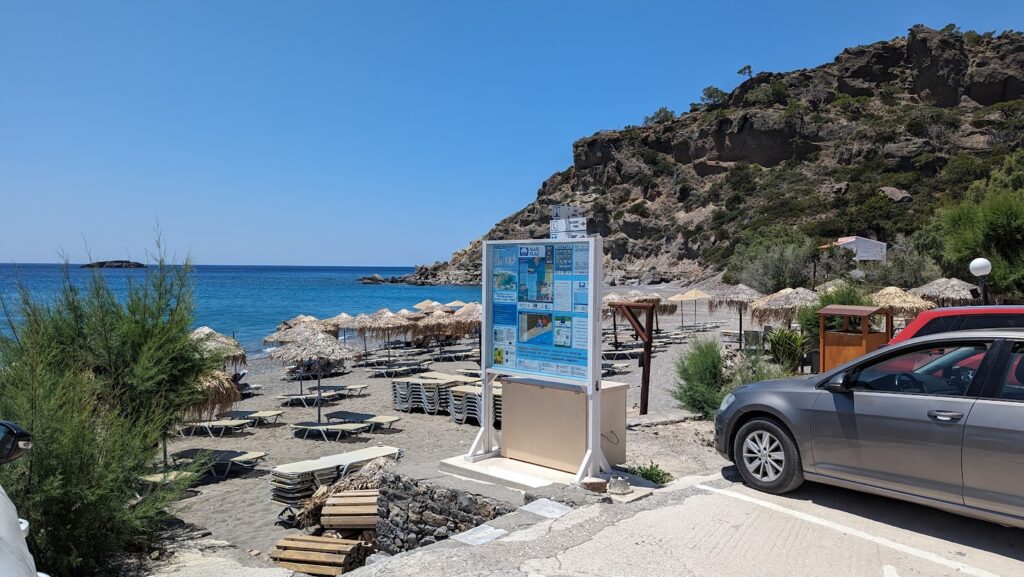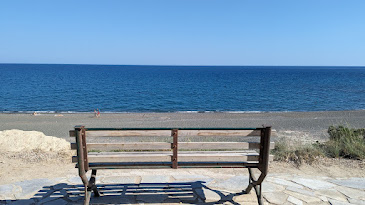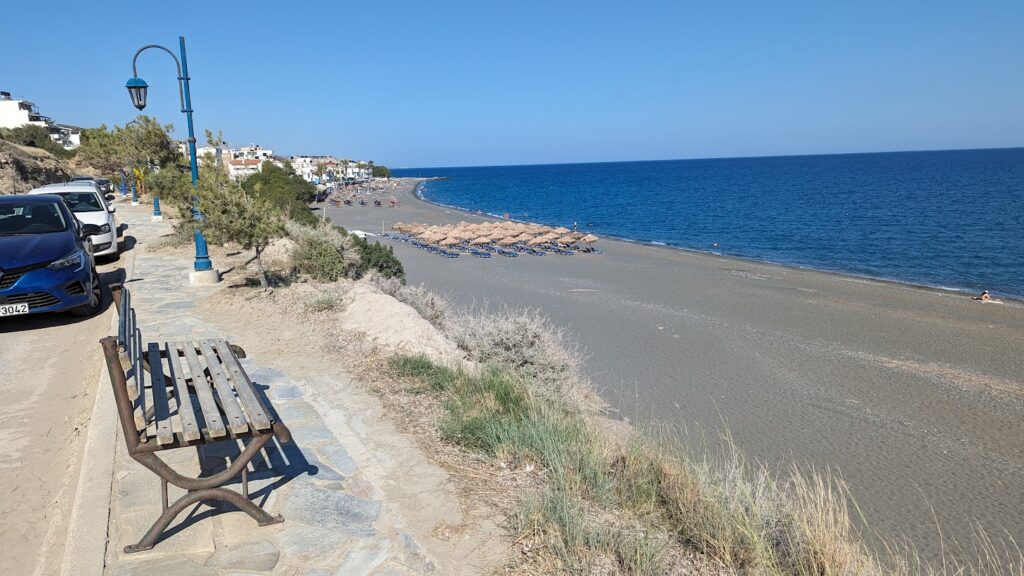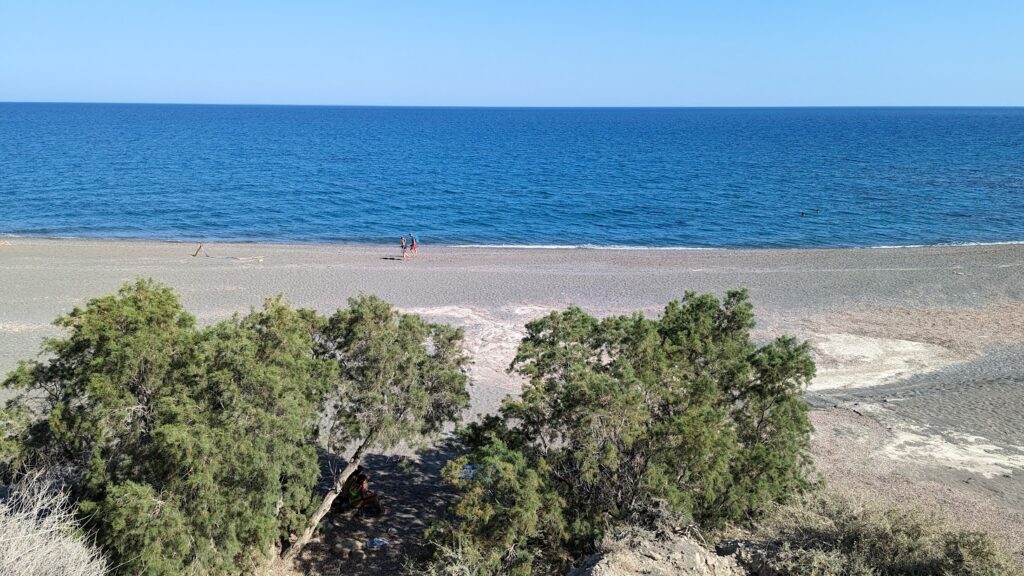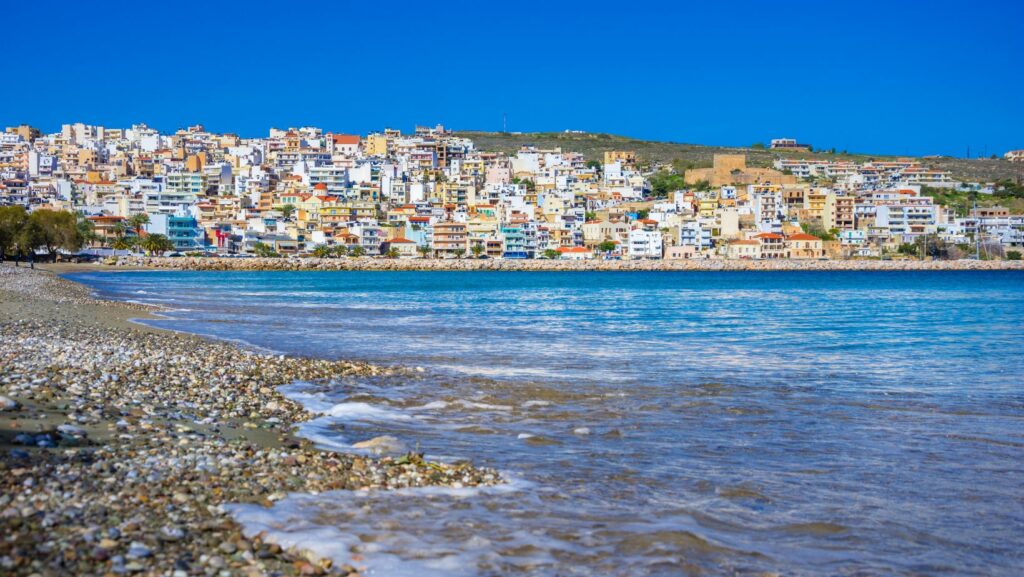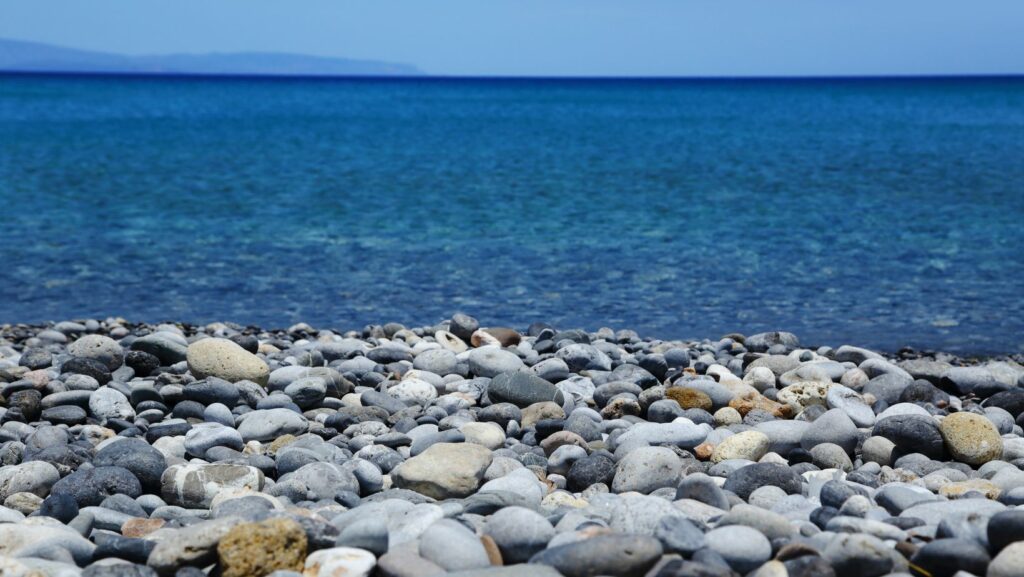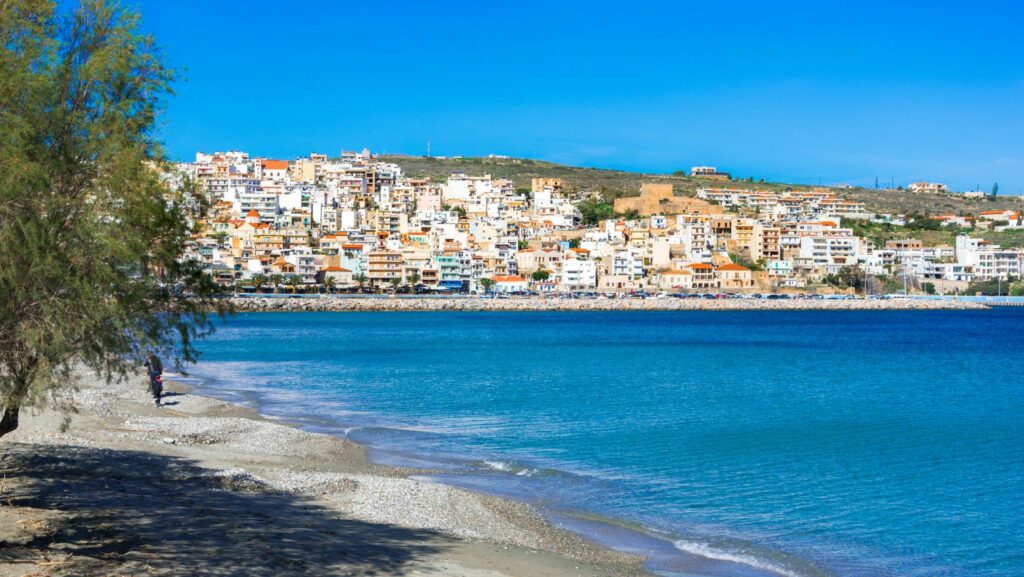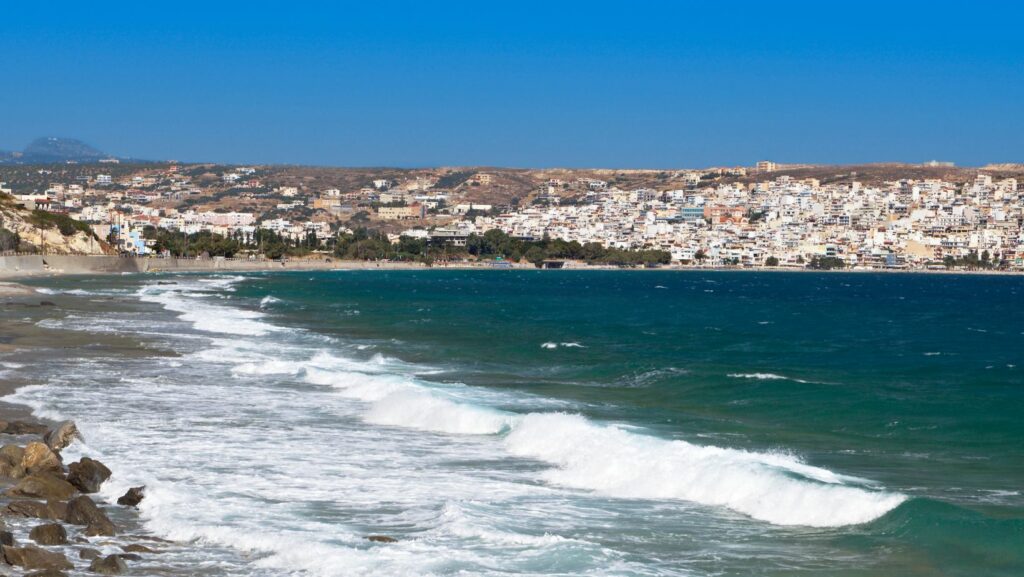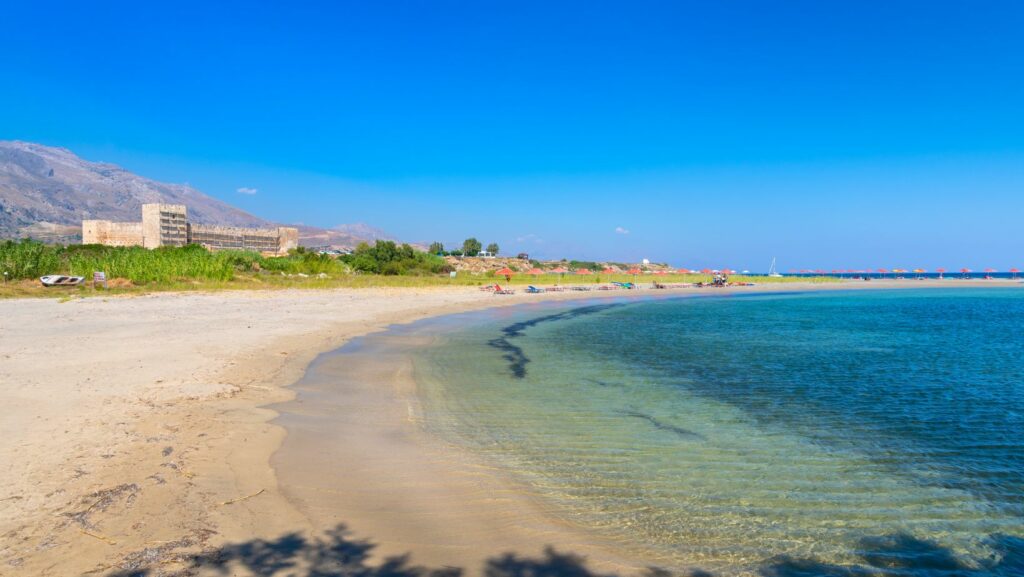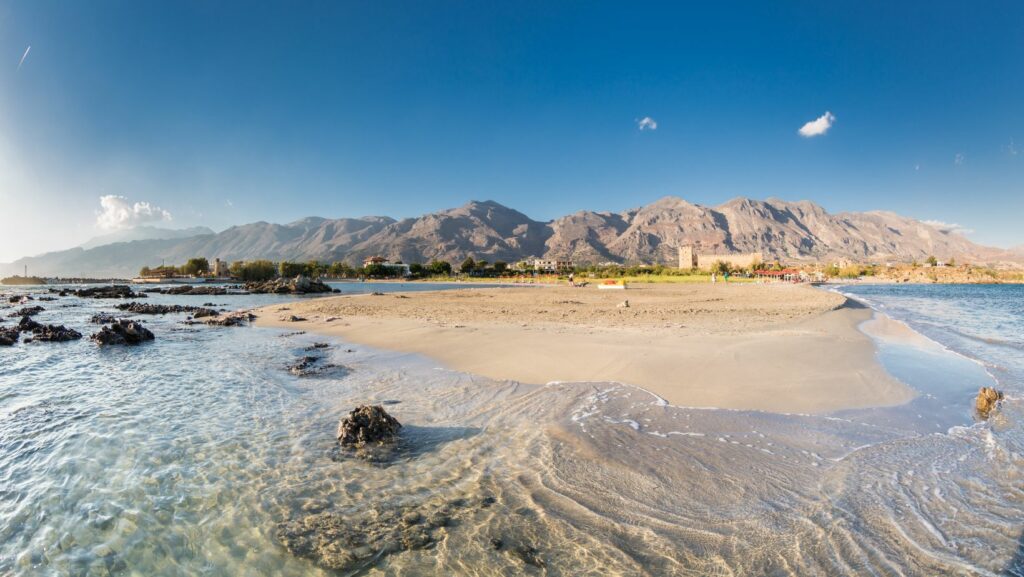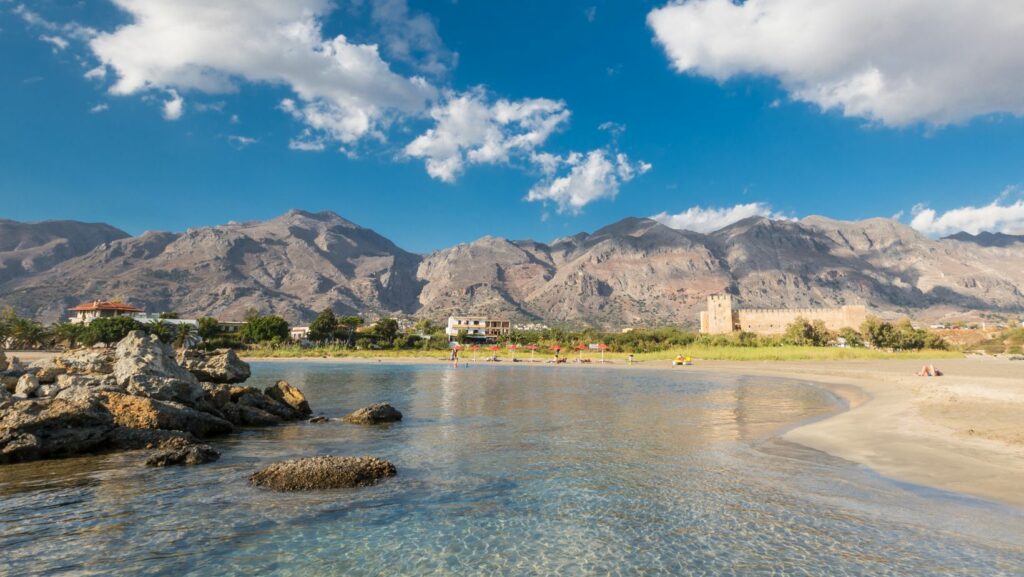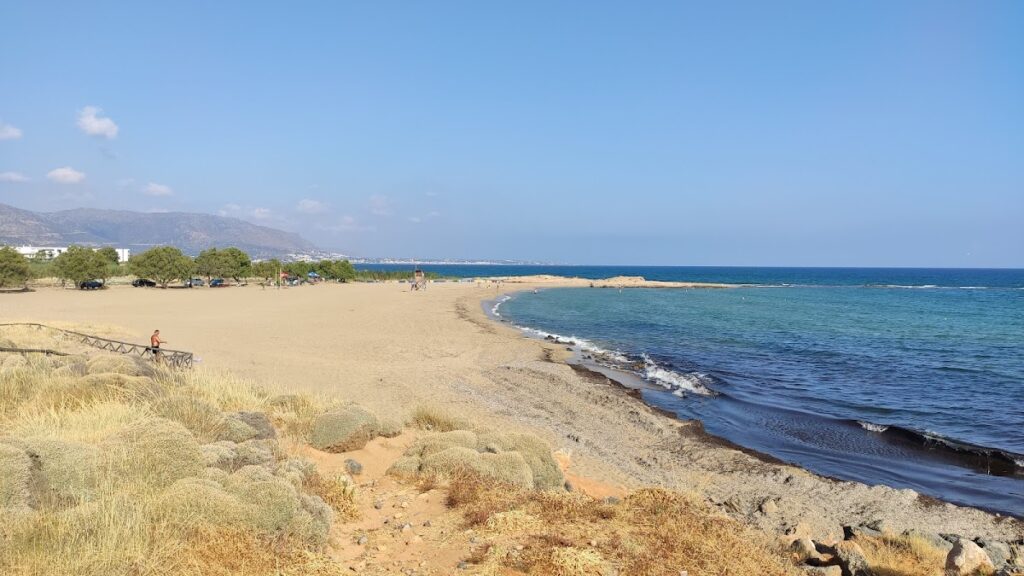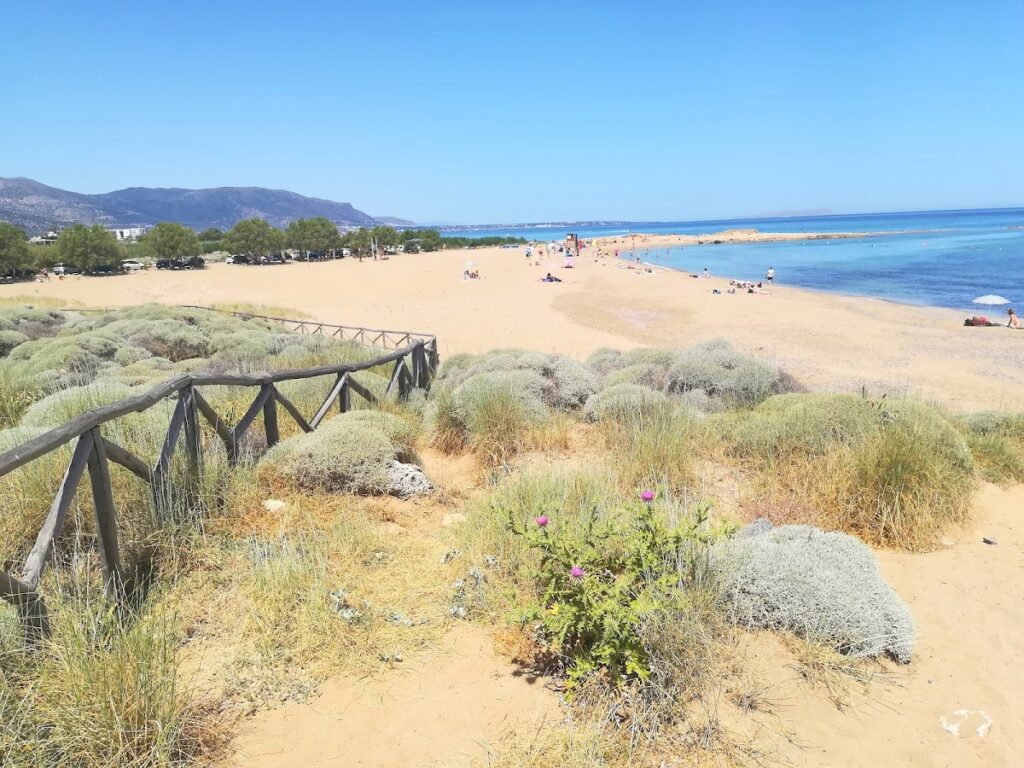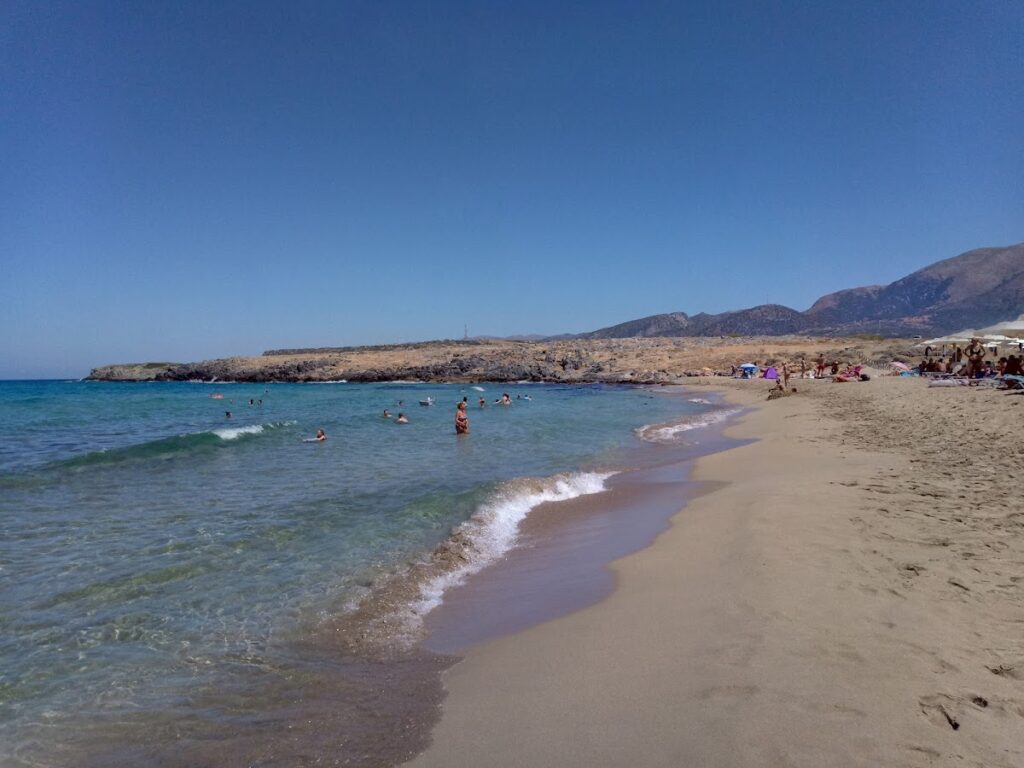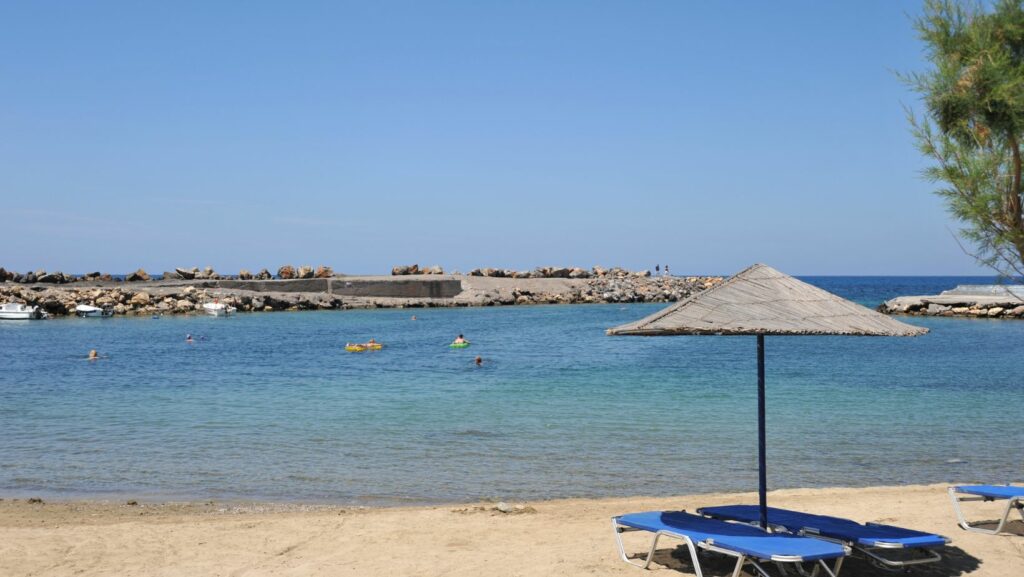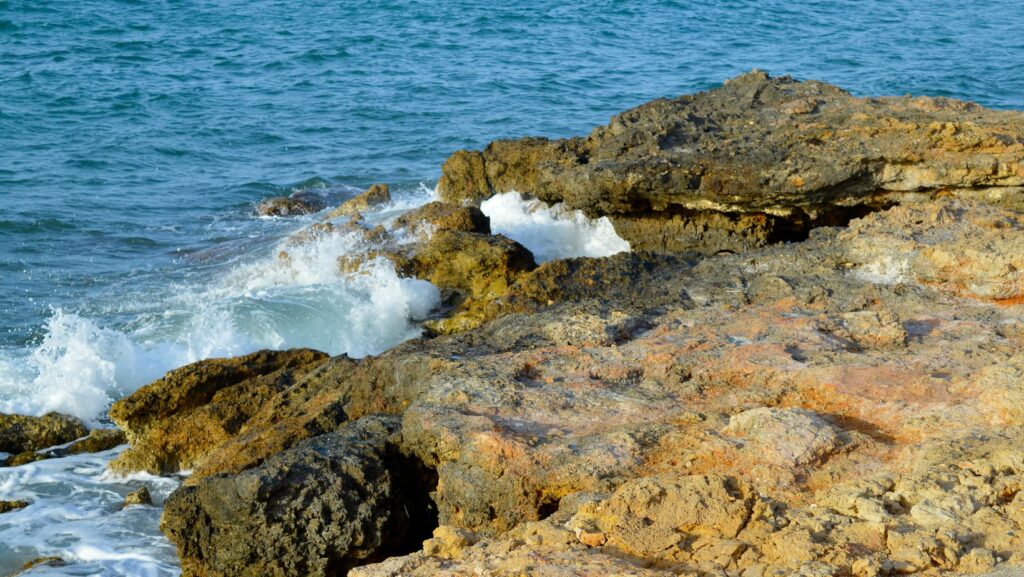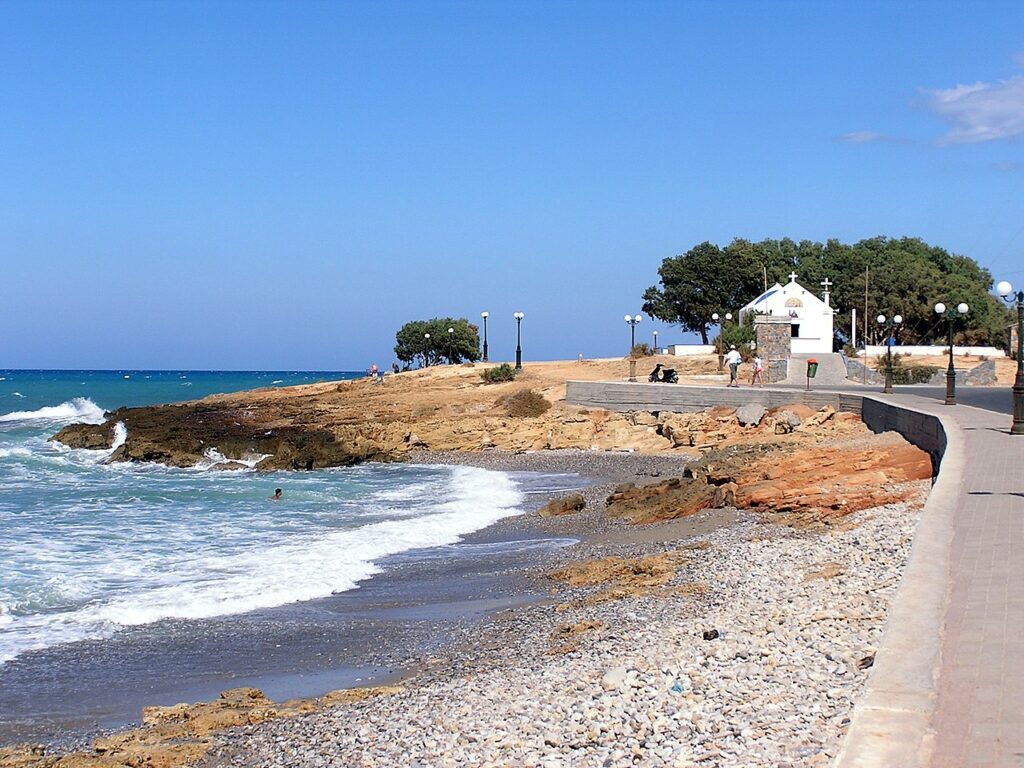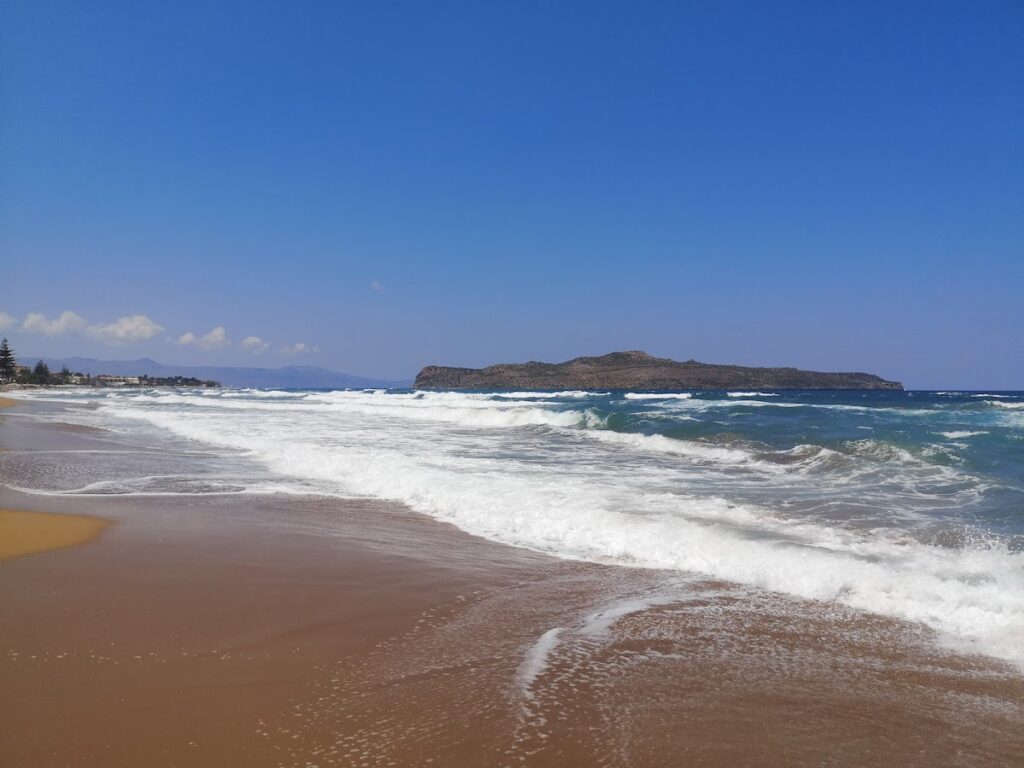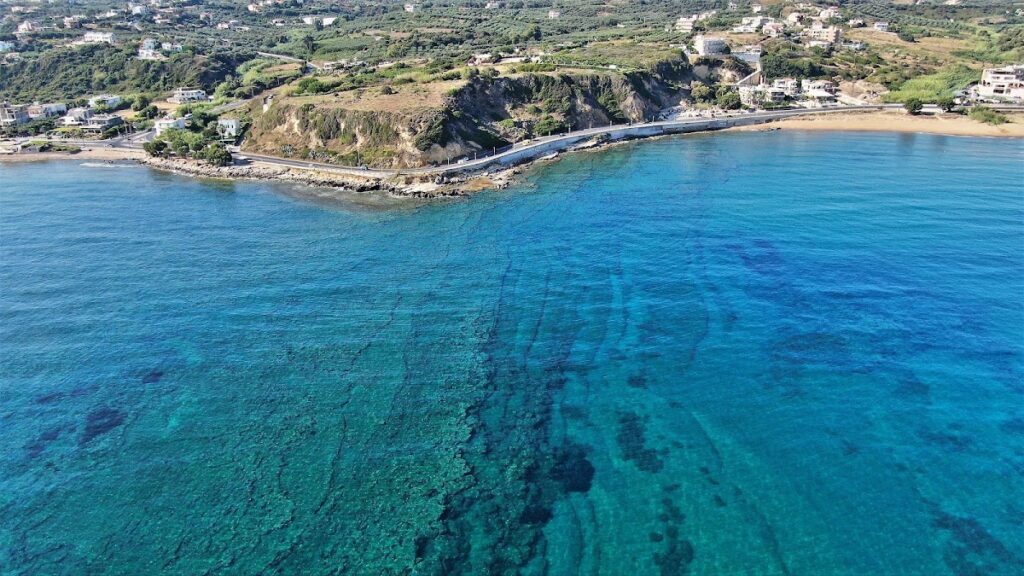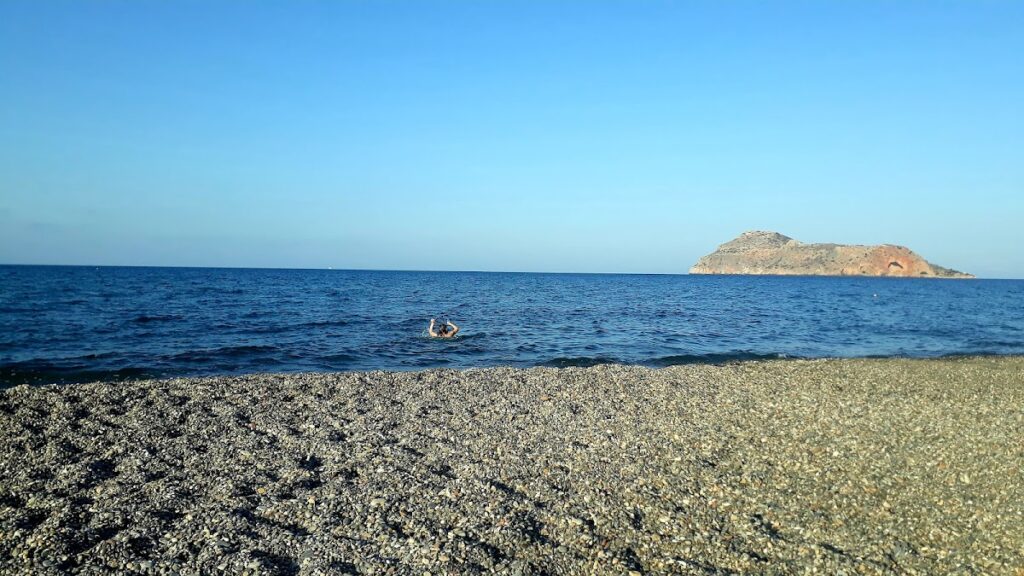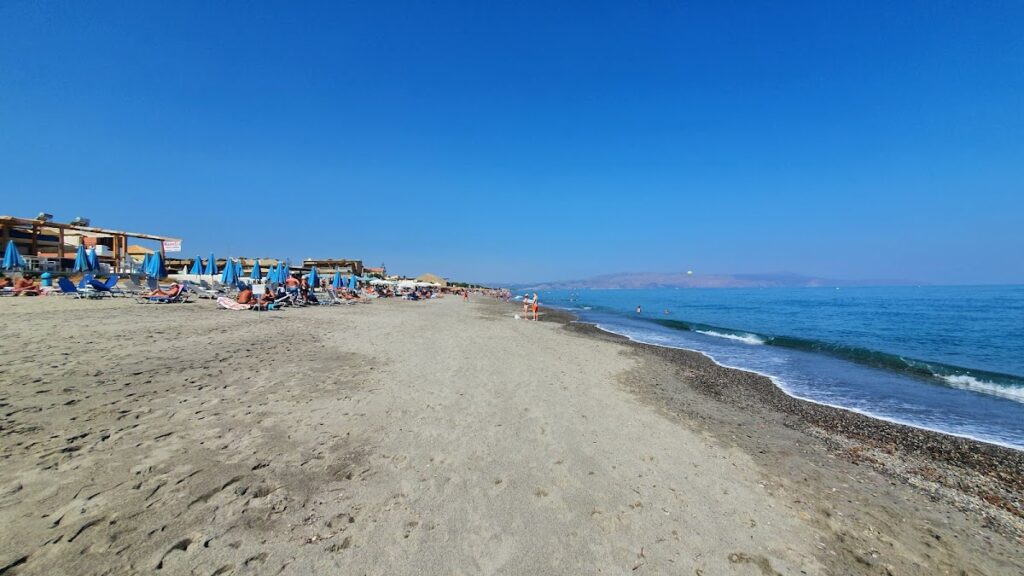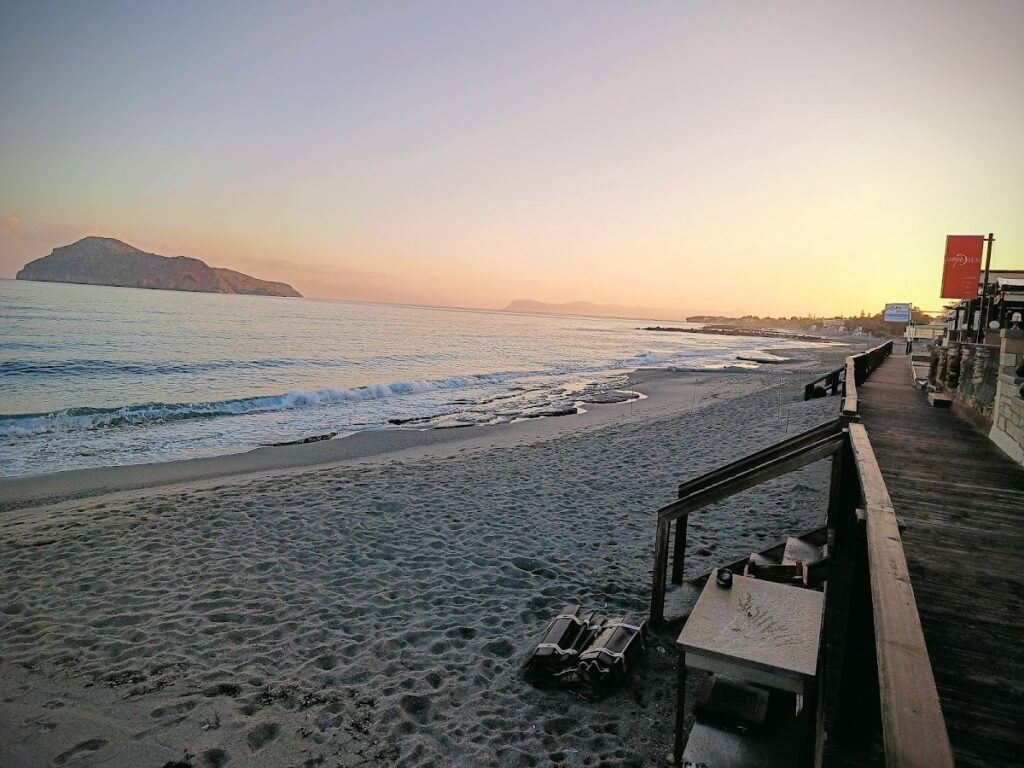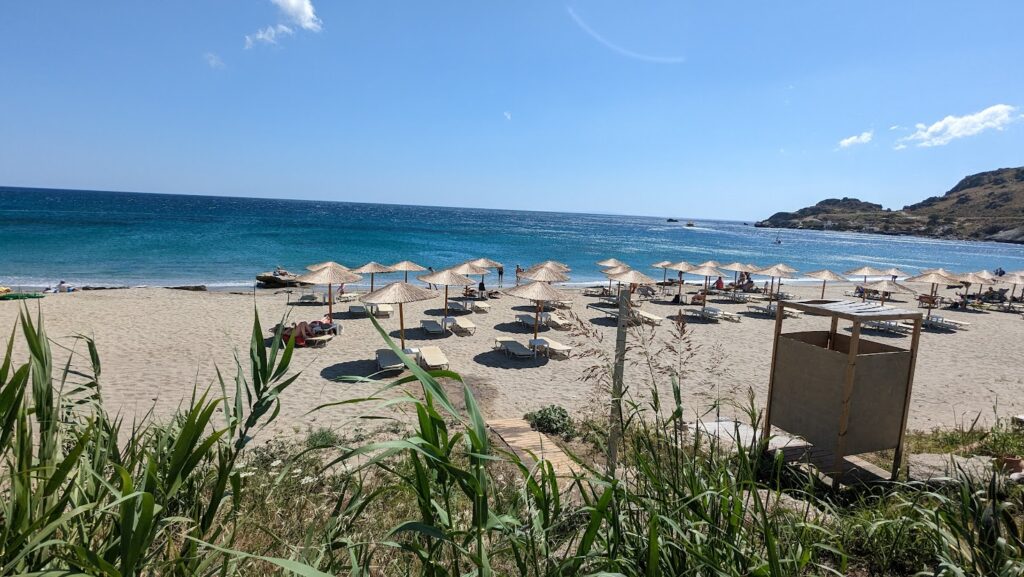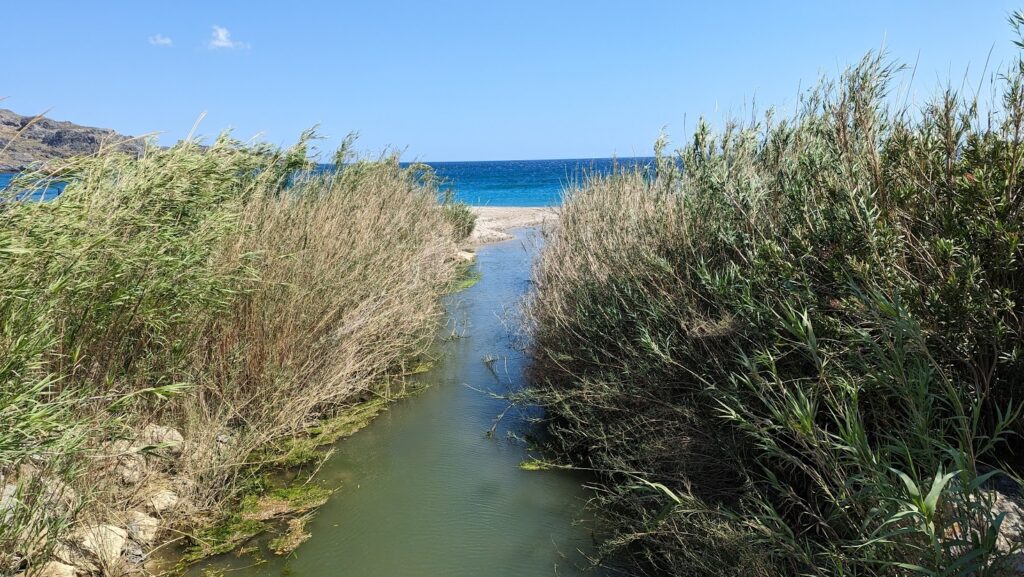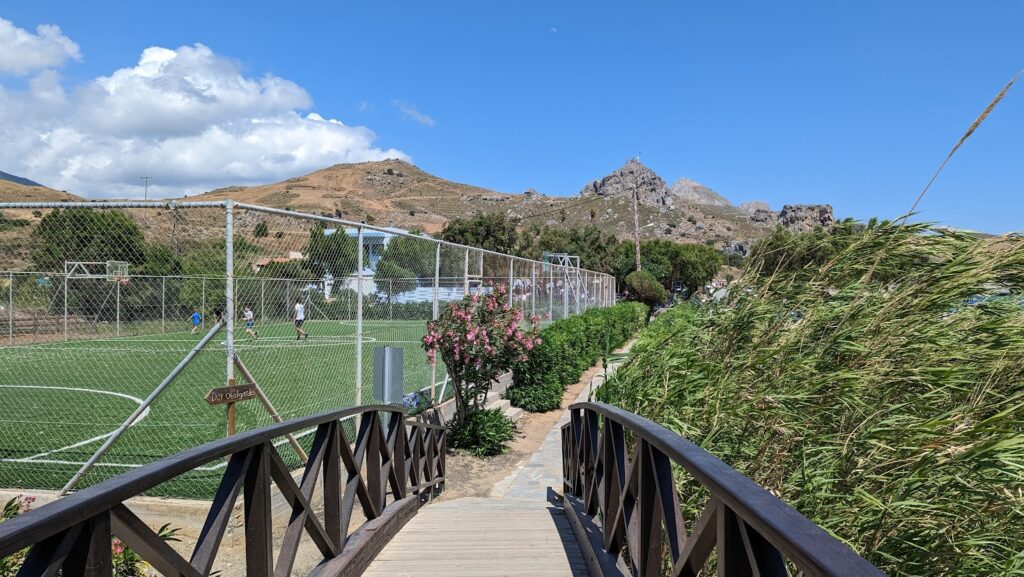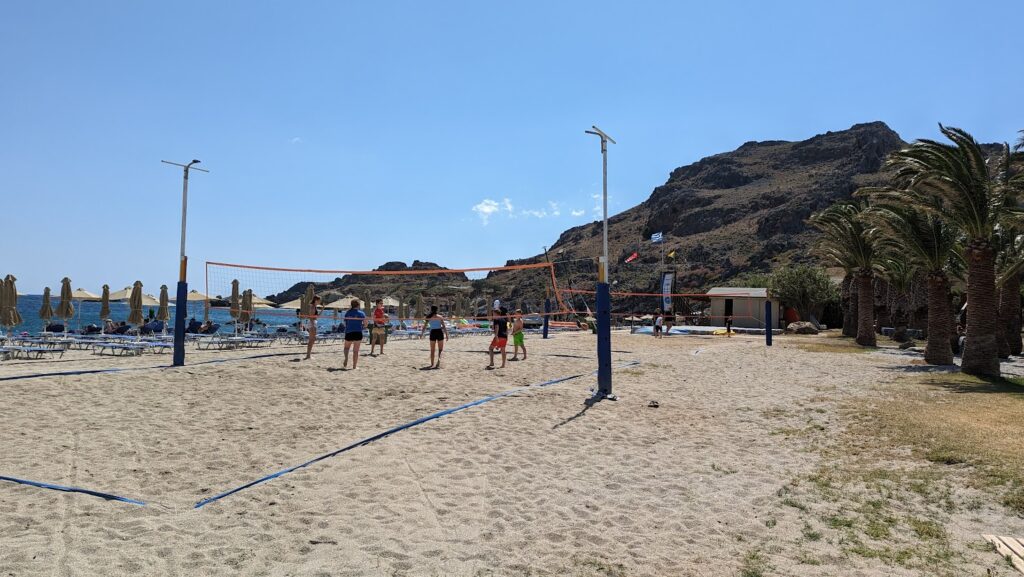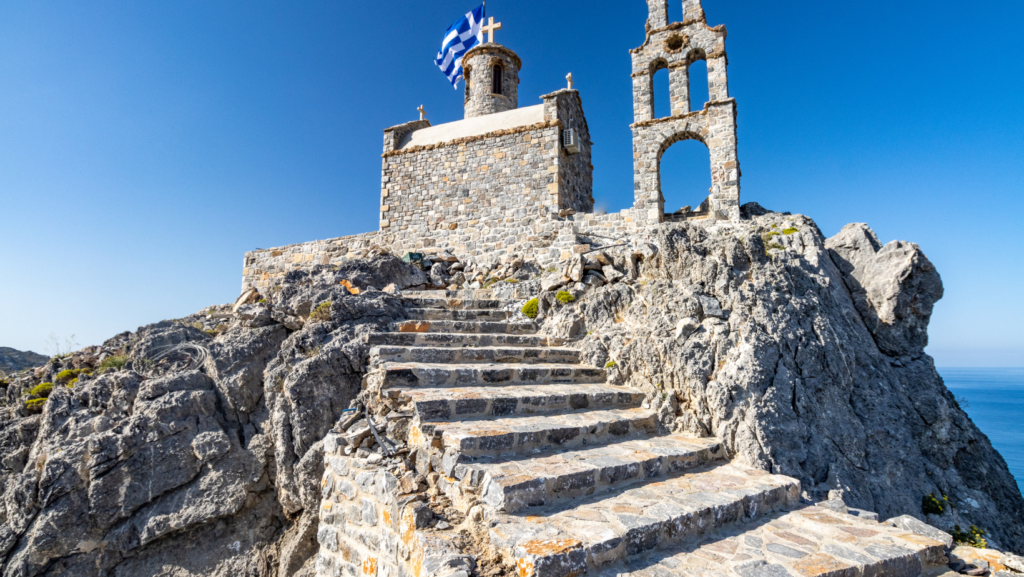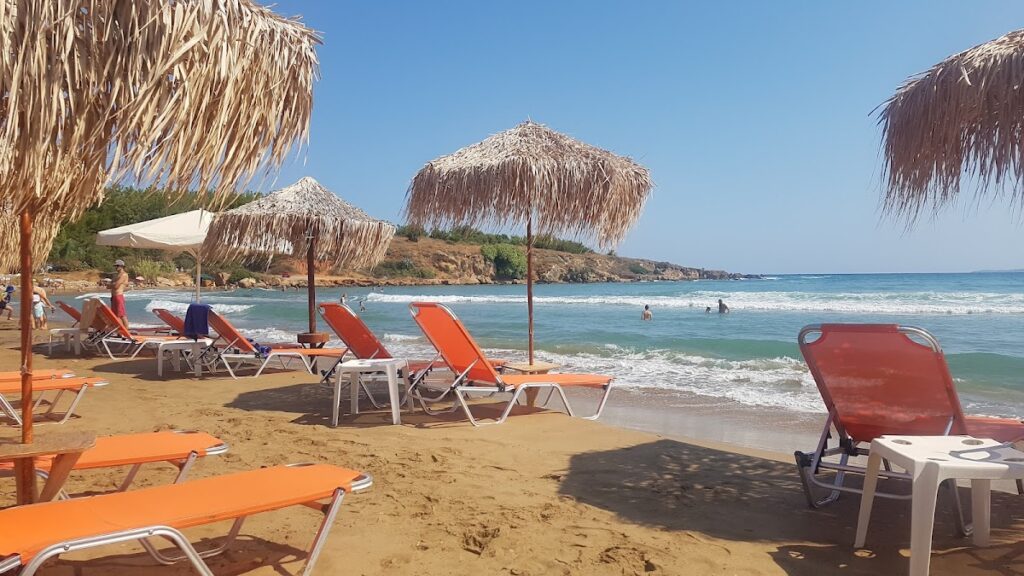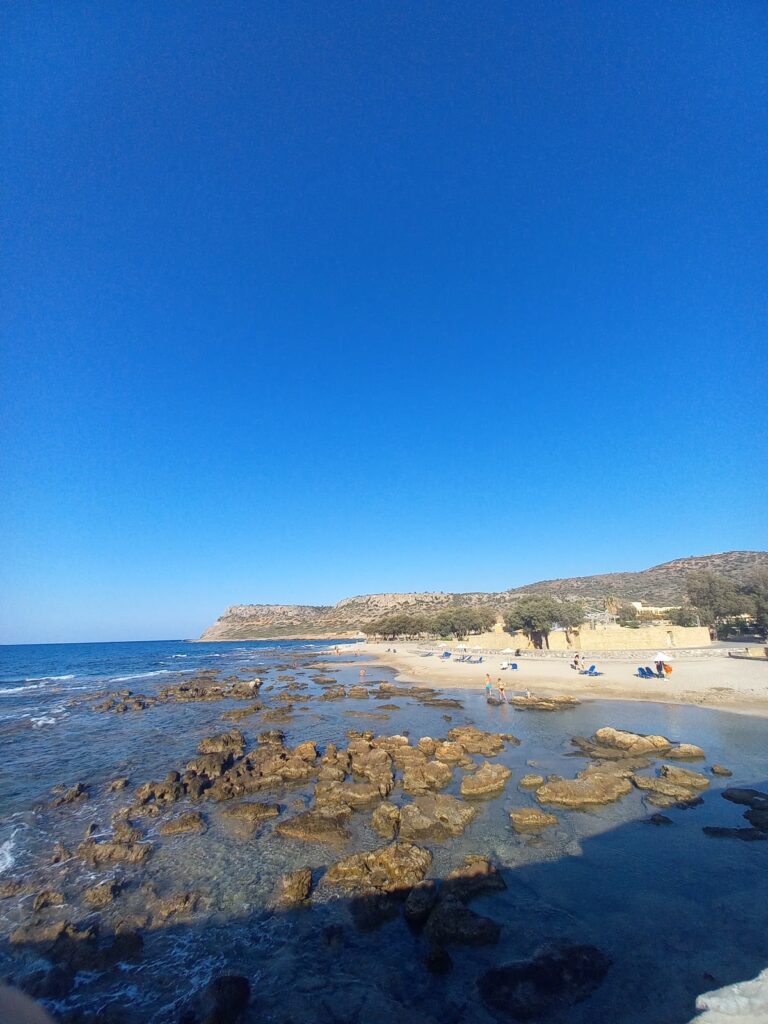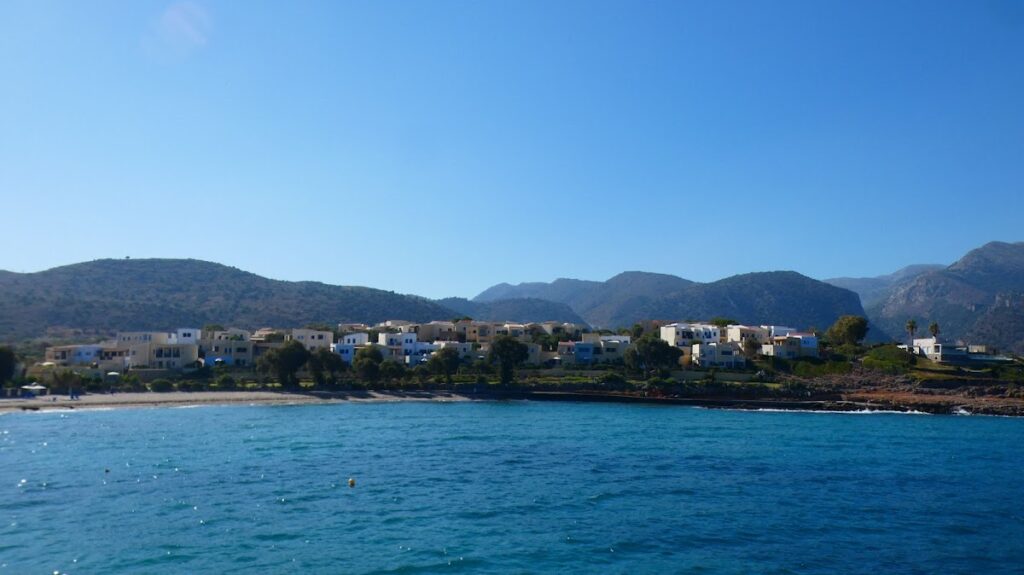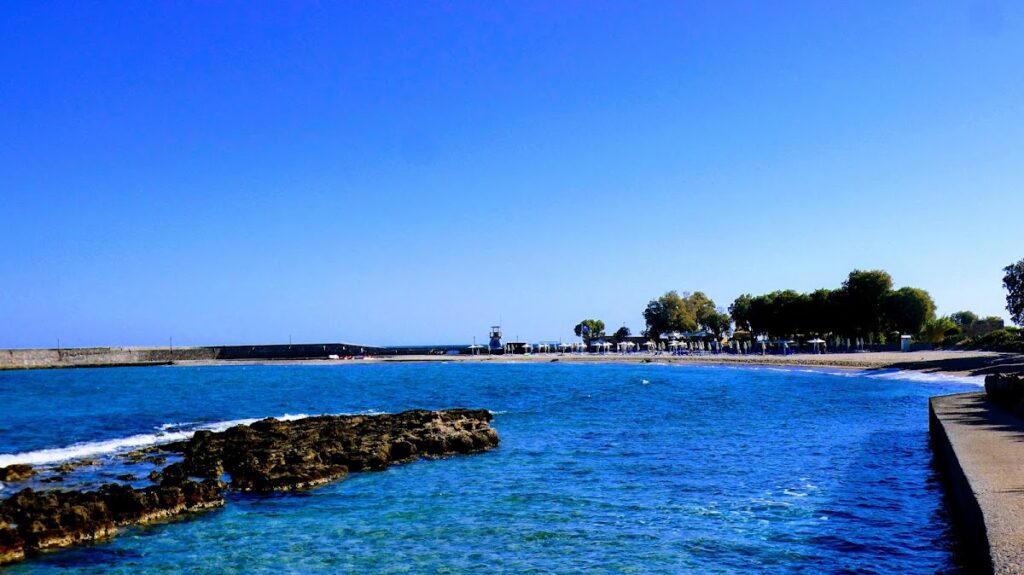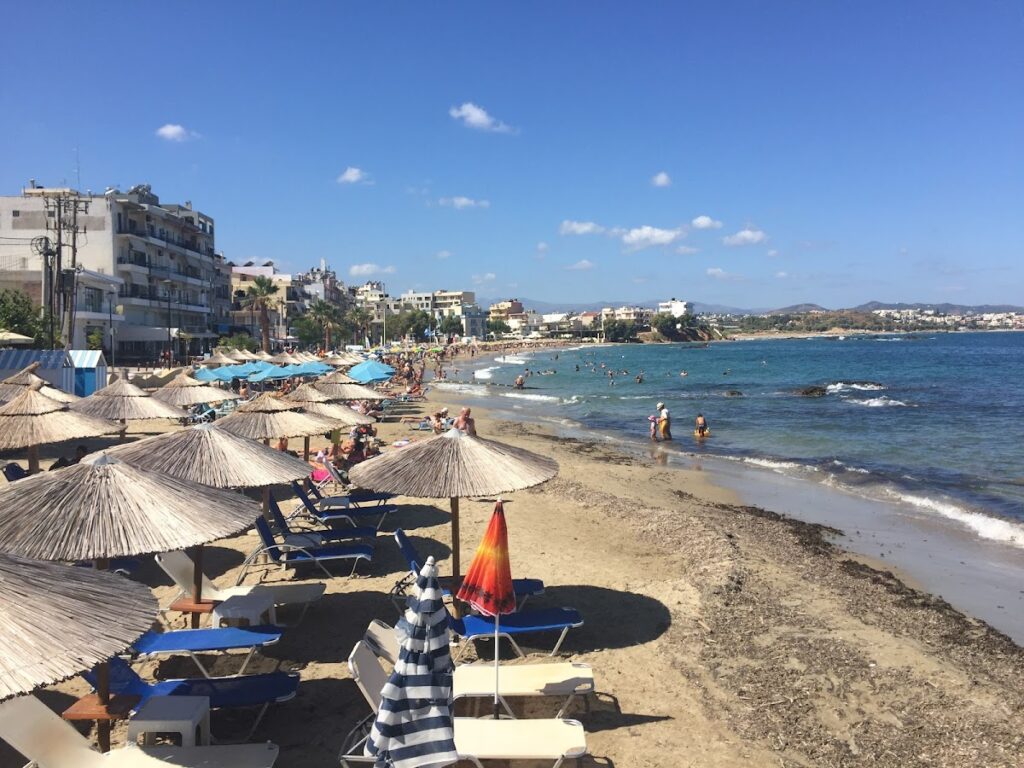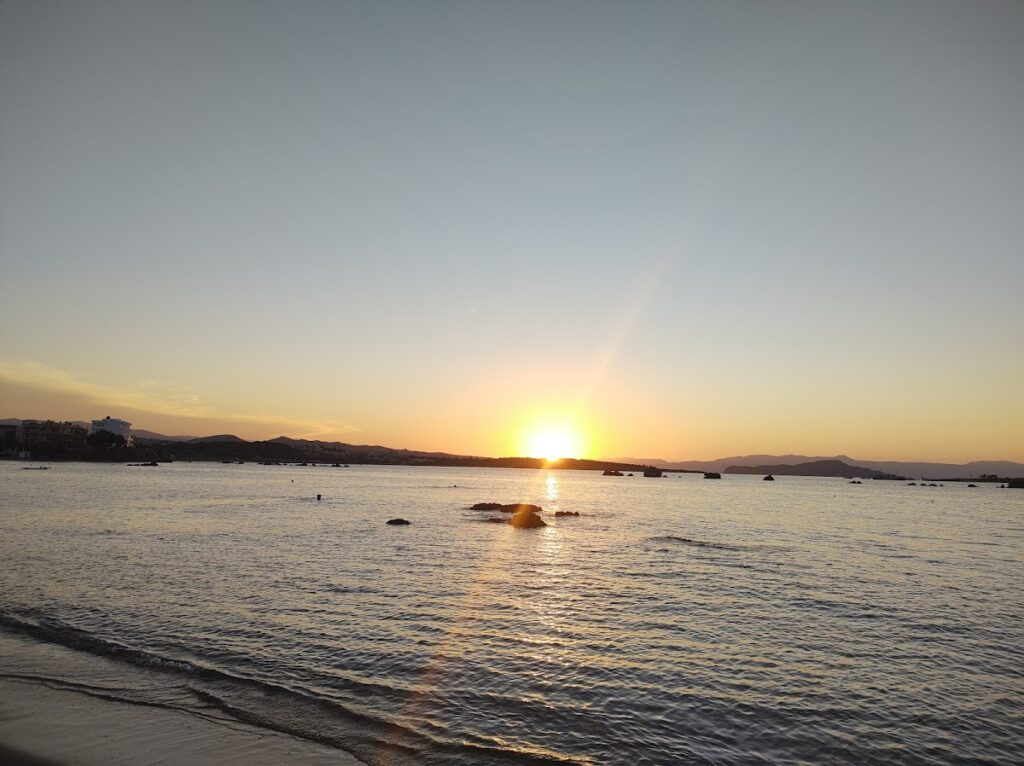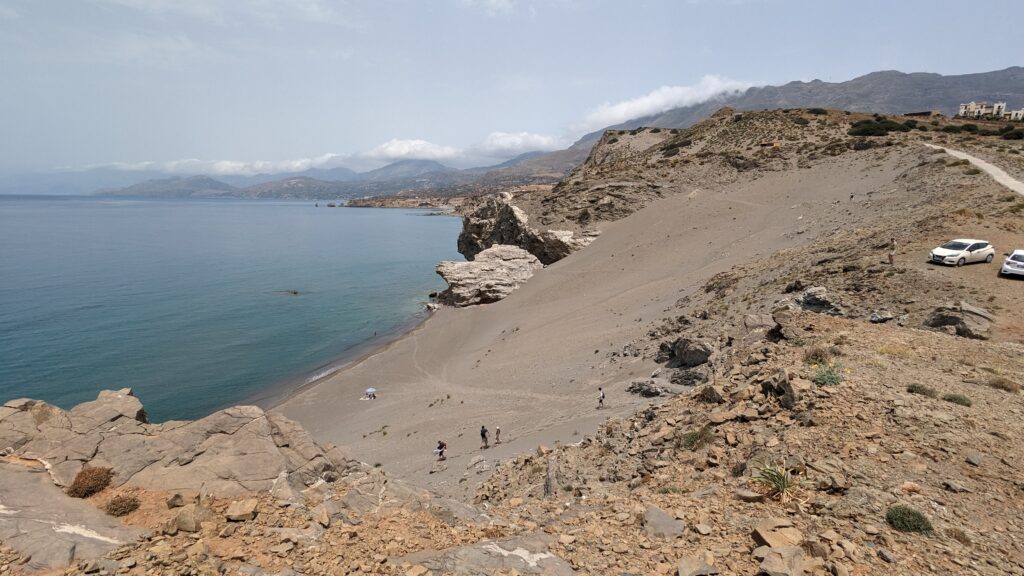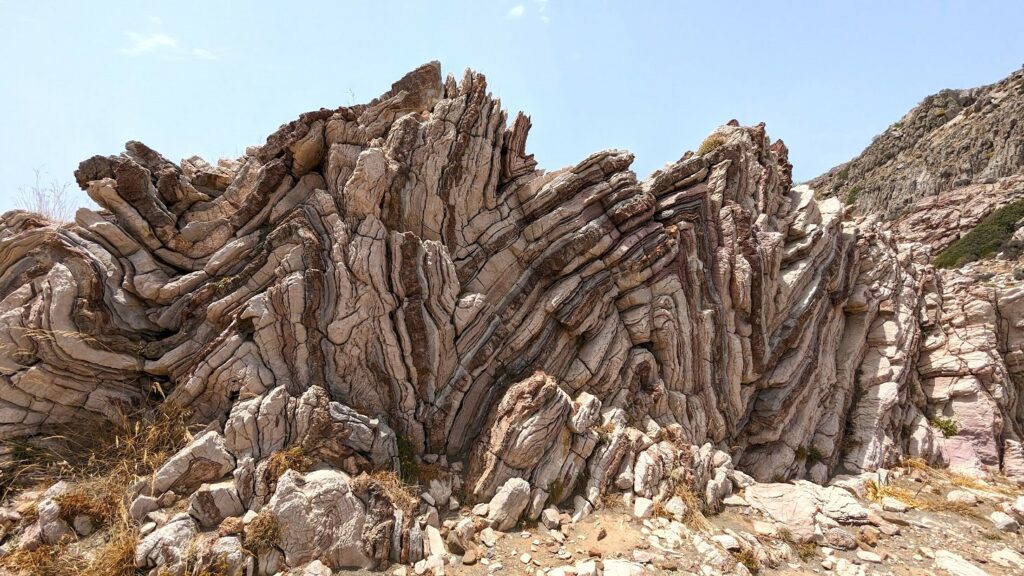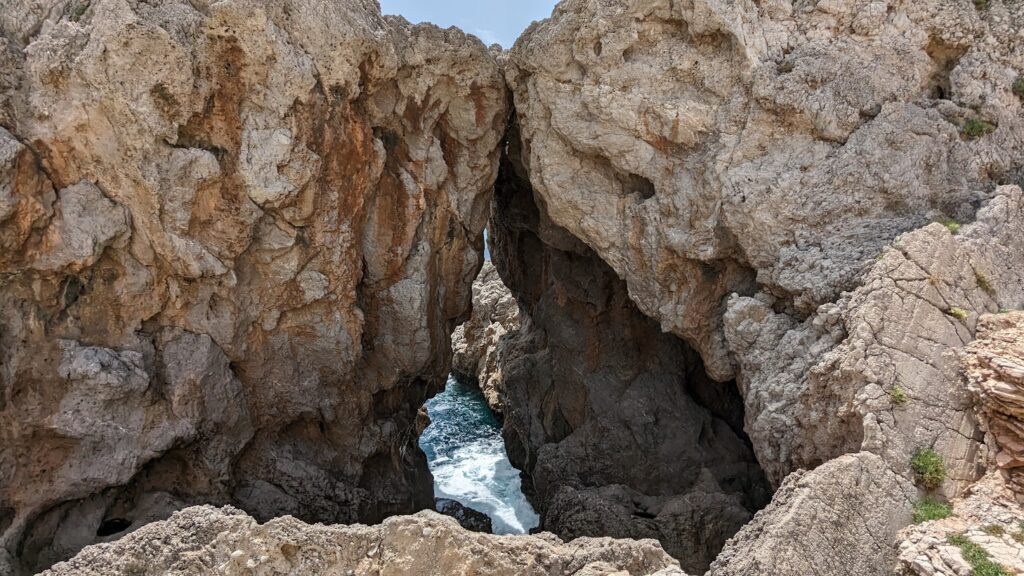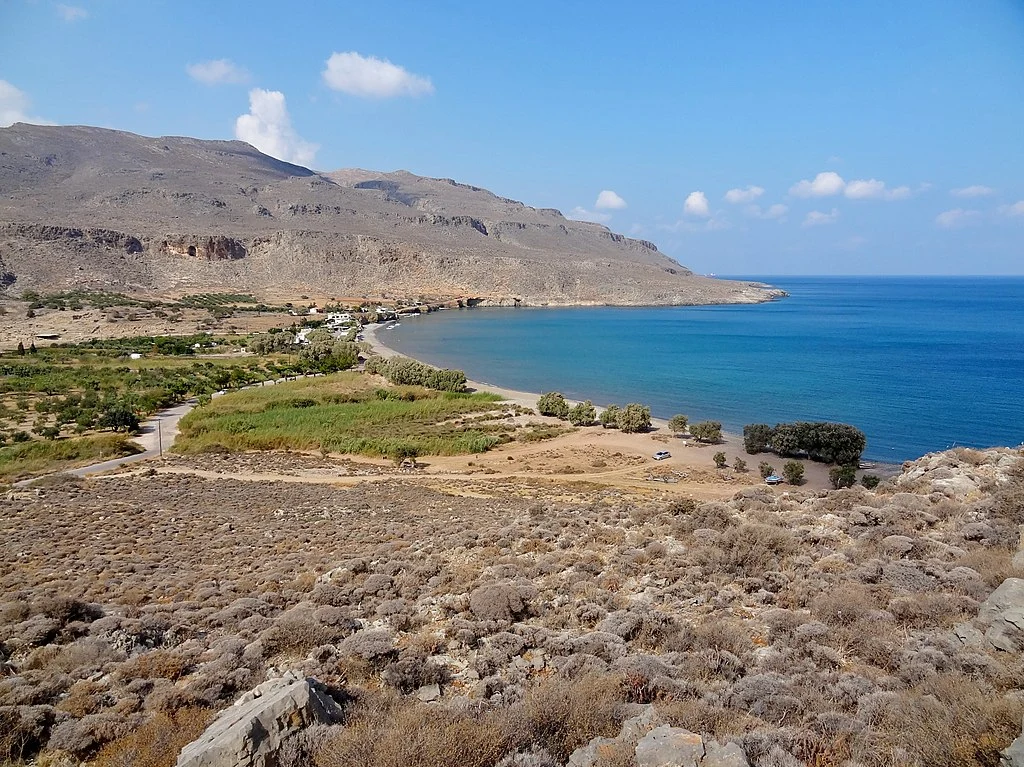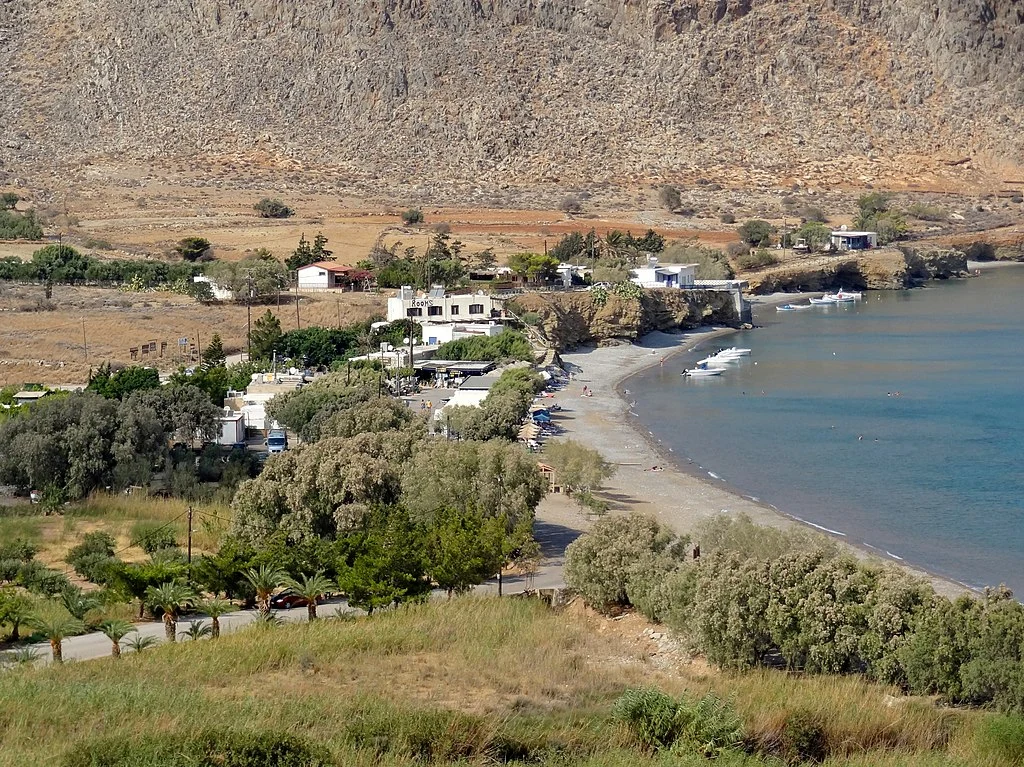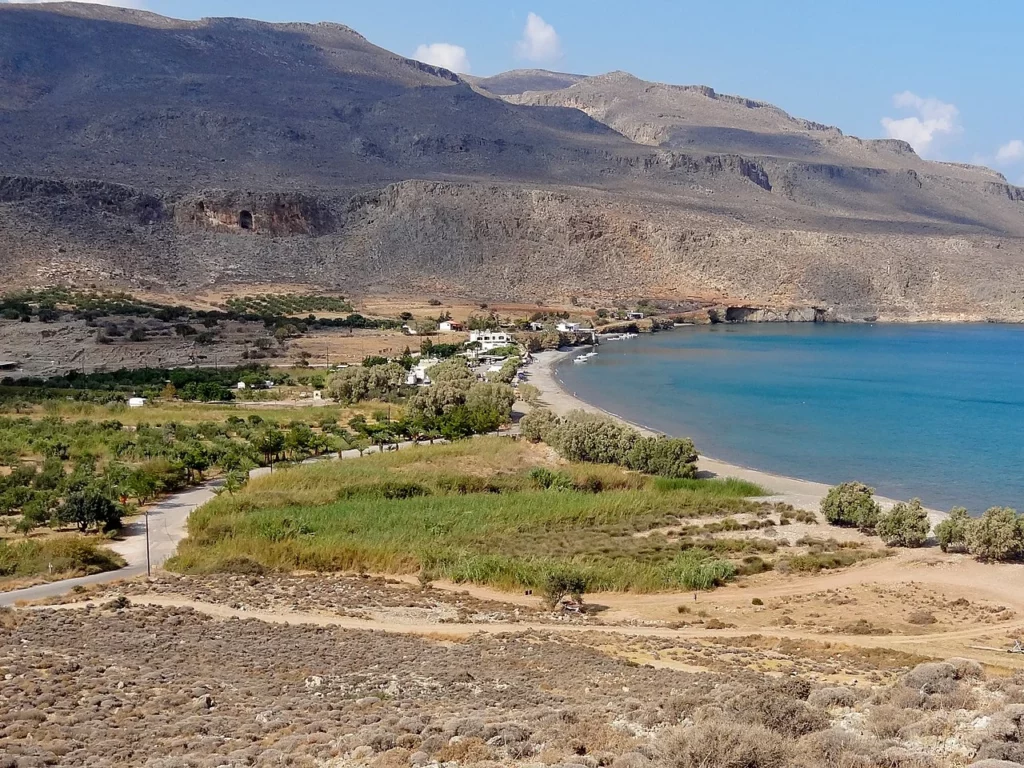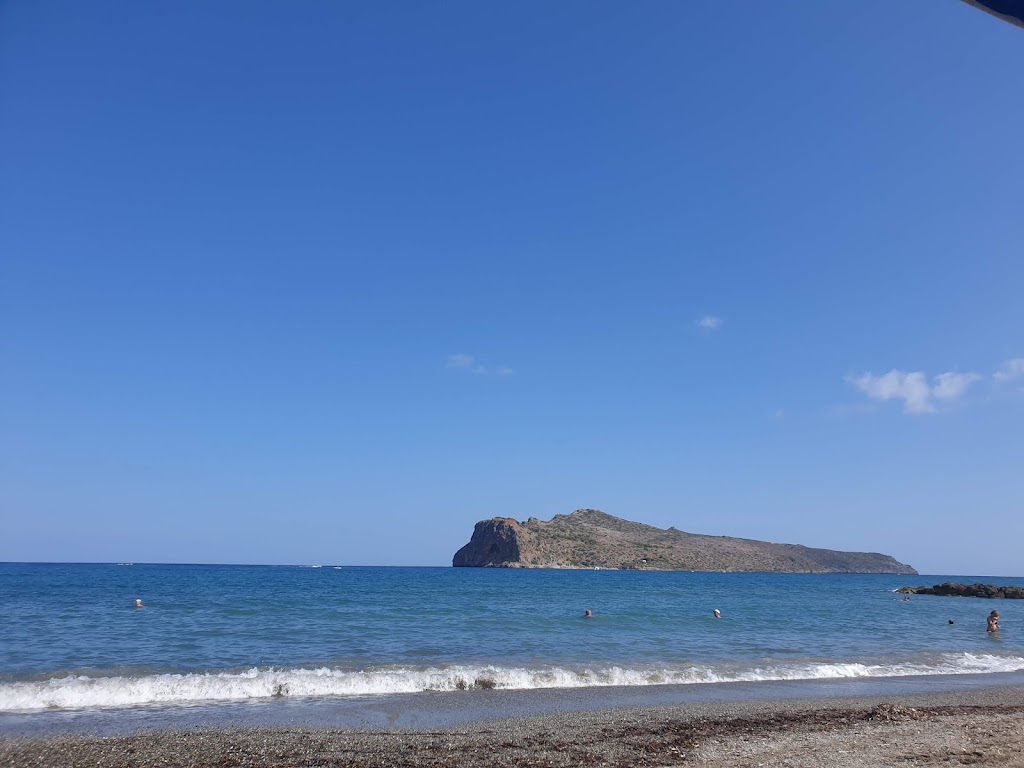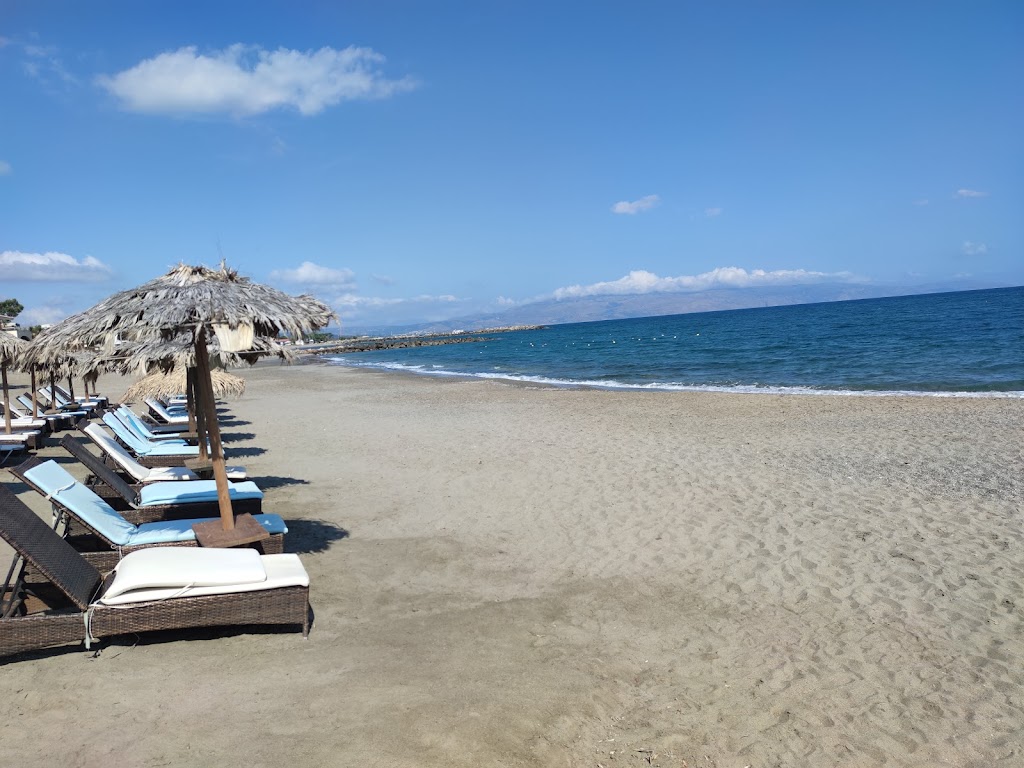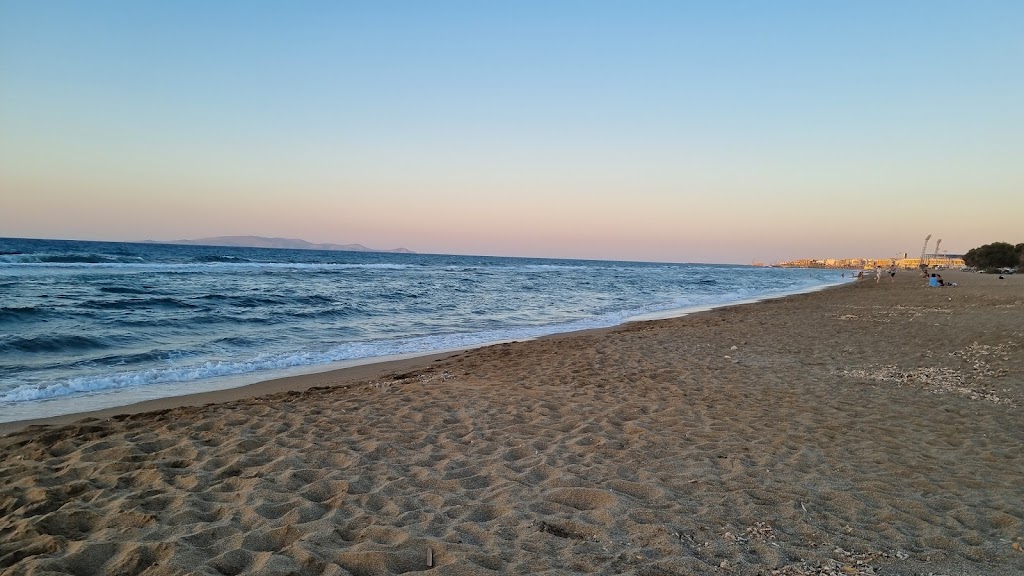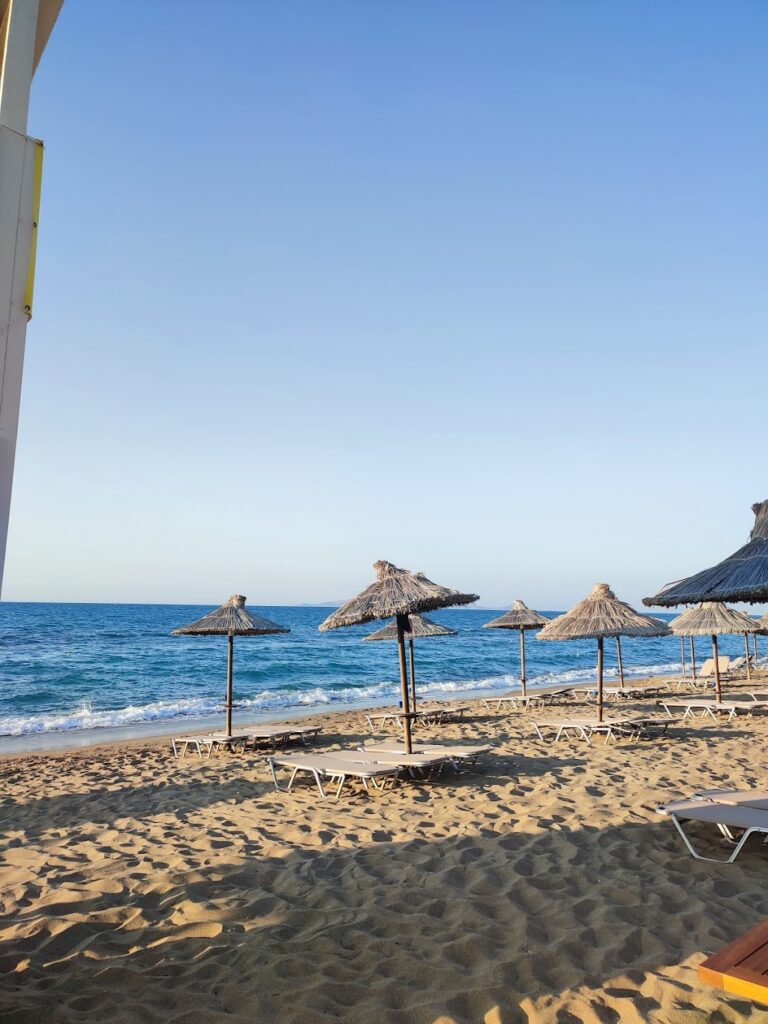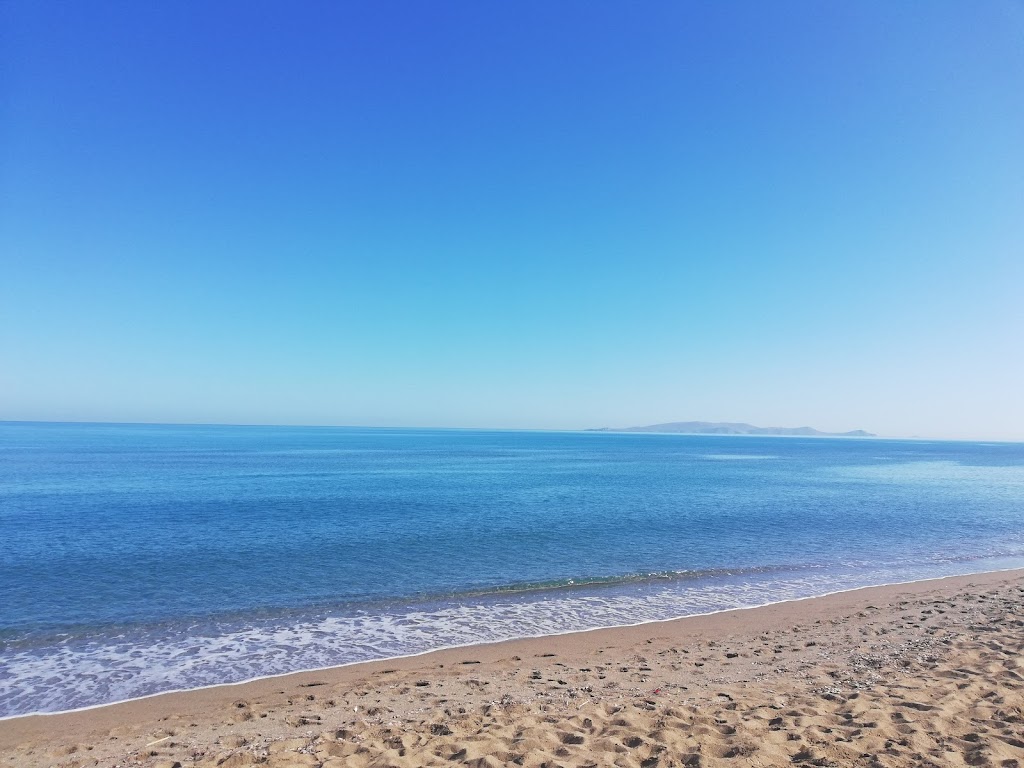Beaches with Accommodation on Crete Island
Find a beach with Accommodation near you
Crete, the largest island in Greece, is blessed with around 200 diverse beaches, each with its own unique charm and beauty. Many of these beaches offer an extensive range of accommodations nearby, allowing visitors to stay just a stone’s throw away from the crystalline Mediterranean Sea.
For instance, the world-renowned Elafonisi Beach is surrounded by a multitude of guesthouses, hotels, and vacation rentals that cater to every traveller’s needs and budgets. Balos Beach, with its distinctive turquoise lagoon, is another popular destination, offering comfortable accommodations that provide spectacular views of picturesque surroundings.
Likewise, at the beautiful Vai Beach, home to Europe’s largest natural palm forest, you can find a variety of stay options, from luxury resorts to charming bed and breakfasts. These beaches, along with many others in Crete, offer the perfect combination of serene relaxation, fun activities, and convenient accommodations, making them ideal destinations for a memorable holiday.
- Paralia Schisma Elountas
- Sand
- Normal
- Blue
Elounda’s Skisma Beach is a picturesque sandy enclave, perfect for families. Its cleanliness and organization make it especially welcoming.
Little ones delight in its flat sandy terrain and the playground, while older kids gravitate towards the available water sports. Occasional winds result in bigger waves, offering simple surfing opportunities.
With convenient facilities like restrooms and showers, coupled with an array of nearby taverns, it’s an ideal spot for families with children.

- Triopetra beach
- Fine Pebbles, Pebbles, Sand
- Normal
- Blue
Triopetra beach, nestled at the base of Mount Siderotas and 52km south of Rethymno, can be reached via paved roads leading from either Akoumia or Sachtouria. Part of the extensive Akoumiani Gialia beachfront, Triopetra got its name as a historical winter refuge for the inhabitants of Akoumia, who built small huts near their olive groves. Presently, most land and hotels in the area are owned by descendants of these Akoumia residents.
Triopetra boasts two distinct beaches, separated by a petite peninsula. The peninsula’s defining feature is the three spectacular rocks jutting out from the sea, giving Triopetra its name, which translates to “Three Rocks”.
The first beach, Small Triopetra or Koumado, resides in an enclosed bay lined with sand and rock to the south of the three rocks. Here, the Akoumianos river meanders into the sea, forming a natural boundary between Triopetra and the enchanting Agios Pavlos Sandhills at Cape Melissa. Small Triopetra hosts a handful of taverns and rooms, with umbrellas available for sun-seekers. Additionally, the southeast edge of the beach is home to a small harbour, known as Stomio or “mouth”, named after the river’s mouth meeting the sea. Just 1km northeast of the beach, the awe-inspiring chapel of Prophet Elias stands on a high hill, commanding an impressive view over Akoumiani Gialia.
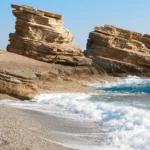
- Georgioupolis beaches
- Sand
- Shallow
- Blue
Georgioupolis, a small coastal town located 38km east of Chania and 21km west of Rethymnon, is a seaside resort nestled in a verdant valley crisscrossed by rivers and springs. Situated on the western edge of a sprawling 10km beach, the town’s beach spans 2km to the east, beginning at the Almiros river and terminating at Kavros beach, a natural continuation of the former. The beach in Georgioupolis is sandy, dotted with dunes, and has shallow waters.
The beach is well-maintained and child-friendly, with lifeguards on duty. Caution is advised during windy conditions due to sea currents. Amenities such as umbrellas, showers, and food and drink stalls are available for beachgoers. Approximately 700m east of the port, the Perastikos river bifurcates the beach, which then widens as it continues eastward. On the opposite end, west of Georgioupolis’s port and near the Almyros river’s exit, lies the picturesque Kalivaki beach.
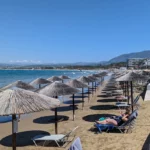
- Voulisma beach
- White Sand
- Shallow
- Turquoise
Voulisma Beach, one of Crete’s most celebrated coastal destinations, is a favoured stop for those journeying to this gorgeous island. Nestled in a shielded cove south of Agios Nikolaos and north of Ierapetra, Voulisma’s accessibility from Heraklion makes it a convenient beach spot.
Distinguished by its clear, shallow turquoise waters, smooth sand intermingled with pebbles, and its well-appointed amenities, Voulisma Beach has been recognized with the prestigious Blue Flag award. Even though the beach may attract crowds during peak times, its exceptional beauty certainly warrants a visit.
Voulisma Beach can be found on Crete’s northeastern coast, near Istro or Istron village. It’s the most notable of several beaches dotted around the trio of bays at Istro, all part of the larger Mirabello Gulf. The larger town of Agios Nikolaos is a 13 km coastal drive north, while Ierapetra lies 22 km south.
In the vicinity of Voulisma Beach, the intriguing archaeological site of Gournia is a standout attraction. Located near Pachia Ammos village and around 10 km east of Voulisma Beach, it is one of the most well-excavated Minoan towns on Crete. Once a bustling ancient settlement, it was ravaged by an earthquake and subsequently abandoned.
Around 11 km southeast of Voulisma Beach, on a steep slope, sits the captivating Panagia Faneromeni Monastery. Worth visiting for its stunning church built into a cave and the awe-inspiring sea views, this monastery is a well-known destination in Crete. Every year on the 15th of August, it becomes a pilgrimage site, drawing visitors from across the island.

- Hersonissos beaches
- Sand
- Shallow
- Blue
Hersonissos, a bustling tourist hotspot in Crete situated just 28km to the east of Heraklion, is renowned for its tranquil beaches and calm seas – a rarity along the northern coast of Crete due to the prevailing northern winds. The most serene beaches can be found to the west of the port, shielded by the Cape Sarandaris. Towards the east of the port, however, lie the resort’s most frequented beaches.
As you venture east from the port of Hersonissos, the first sight to greet you is a sprawling, narrow, sandy beach, buzzing with throngs of beachgoers. It’s impeccably organized and conveniently close to the city’s amenities, though it may not be the best choice for those seeking a more serene environment.
Journeying further east, a series of small, sandy coves become apparent, primarily situated in front of hotels. Of these, Silva Maris Beach stands out with its high level of organization, a lifeguard, and numerous facilities. Continuing eastwards, you’ll encounter Star Beach, one of Crete’s most populous beaches, largely patronized by British and Dutch tourists. Lastly, near Cape Drapanos lie the peaceful beaches of Eastern Hersonissos, offering a quieter seaside experience.

- Plakias beach
- Sand
- Shallow
- Blue
Situated 36km to the south of Rethymno city, Plakias is a charming tourist haven nestled at the mouth of a fertile valley just beyond the Kouroupa range, where the Kotsifos river meets the sea. It owes much of its popularity to the impressive Gialia beach, stretching for 1.3km from the edge of the town to the east, ending at Cape Mouri. This fully-equipped beach, characterized by its crystal-clear, cool waters, is an ideal location for leisurely walks or cycling along the adjacent road. It features numerous hotels and restaurants, as well as beach essentials such as umbrellas, water sports facilities, beach volley courts, snack bars, changing rooms, and showers.
Paligremnos, the eastern portion of the beach, boasts fine sandy shores and is well-appointed with various amenities close to local accommodation and eateries. Noteworthy are the tall, vertical cliffs nearby that prove to be a magnet for climbing enthusiasts. This spot, also known as “Gonates” (knees), is steeped in local lore; it’s said that the epic hero Digenis knelt here to drink from a local spring. An intriguing phenomenon takes place here every full moon from September to January, as the moon’s reflection on the sheer cliffs draws large squids to the beach, which locals catch with long sticks. A few meters south of Paligremnos, you can also discover tunnels once used for transporting coal to waiting cargo ships.
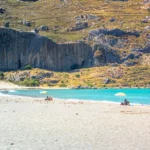
- Stavros beach
- Sand
- Shallow
- Blue, Green
Stavros beach is situated 17km northeast of Chania on the farthest point of Cape Akrotiri, is known for its distinct, camel-shaped mountain, Vardies. This towering landmark gained recognition in the film “Zorba the Greek” as the backdrop for Anthony Quinn’s iconic Sirtaki Dance in 1964. Once a quaint fishing hamlet, Stavros has since transformed into a bustling tourist hub, complete with numerous hotels and top-tier tourist facilities. The area’s popularity is further boosted by its two stunning beaches.
The primary beach lies to the village’s east, nestled at the base of the Vardies mountain and adjacent to the scenic harbour. It forms a protected, semi-circular lagoon with pristine white sands and shallow, turquoise waters. The contrast between the rugged mountain and the tranquil beach provides a unique and enchanting swimming experience. As anticipated, the beach is well-equipped with all the necessary amenities.
200 meters northwest of the main beach, you’ll find Stavros’ secondary beach, a mix of sandy stretches and rocky areas. It’s less developed and cleaner than its counterpart, but its exposure to the elements can lead to wavy seas. The peninsula separating the two beaches holds historical significance, housing remnants of an ancient quarry that provided limestone for Chania’s Venetian-era Walls (13th- 17th century).
Beyond beaches, Stavros offers an array of other services including accommodation, eateries, mini markets, shops, cafes, and regular bus connections to Chania city.

- Matala beach
- Fine Pebbles, Sand
- Deep
- Blue, Green
The beach of Matala is situated 68km southwest of Heraklion, where the Messara plain and Asteroussia Mountains intersect. It is one of the most frequented tourist spots in Crete and the most well-known beach in the southern region of the Heraklion prefecture. Matala is notable for its rock-carved caves and its association with the hippie culture of the 1970s. It lies in close proximity to Phaestus, the second largest palace of the Minoan civilization, having once served as its port. During the era of the Romans, Matala transformed into a port for Gortyn.
Nestled at the end of a small valley, Matala overlooks an enclosed bay with a picturesque view of the Paximadia islands. The beach spans 300m and features beautiful sandy shores, fine gravel, and crystal-clear deep waters. However, parts of the seabed, particularly the central area, are quite rocky and waves are common due to frequent westerly winds. A large cave can be found on the northern part of the beach, from which some thrill-seekers dive.
Matala beach is well-equipped with amenities such as umbrellas, restrooms, showers, lifeguards, first aid facilities, beach volleyball courts, snack bars, water sports, excursion boats, and a camping site. The surrounding area of Matala offers a range of accommodation, dining, and entertainment options. The beach is largely shaded by tamarisk trees, providing a respite from the sun. Come evening, the beach bars are brimming with people, both locals and tourists. The internationally acclaimed Matala Festival draws large crowds every June.

- Bali beaches
- Sand
- Shallow
- Green
The coastal resort of Bali is situated in a vast bay, 30km east of Rethymno and 43km west of Heraklion. The National Road that connects Heraklion and Rethymno passes alongside the village, making Bali easily reachable from all parts of the island. It’s a perfect spot for family getaways and romantic vacations. Bali boasts four beaches nestled in sandy coves with appealing greenish waters. The beaches, shielded by the bay facing west, are typically tranquil and suitable for children, with good organization. The coolness of the water is attributed to the numerous springs around that channel fresh water into the sea from the Psiloritis Range.
Livadi Beach
As you enter the village, the first beach you encounter is Livadi, the longest in the area. It’s located in an open bay, which is more exposed to winds than the other three. Despite being well-organized and frequently bustling, it’s less picturesque than the others. Its name, Livadi (meaning meadows), is due to the nearby valley. At the eastern end of Livadi, you’ll find two separate smaller beaches, Kouskouras.
Varkotopos Beach
Moving ahead, at the village center, you’ll find the secluded bay of Varkotopos featuring a beautiful beach with sand and gravel, which is well-organized and popular. It’s perfect for young children due to the shallow waters and proximity to all necessary amenities.
Limani (Harbor) Beach
Further north, you’ll come across the scenic port of Bali, adjacent to a clean beach. Known as Limani in Greek, it’s well-organized and surrounded by numerous restaurants and shops.
Karavostasis Beach
Karavostasis, the last beach you’ll encounter, is the most beautiful in the area. It’s smaller than the other bays, which often makes it appear crowded. Although it’s well-organized, it’s less so than the others.
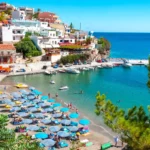
- Falassarna beach
- Rocks in places, White Sand
- Normal
- Turquoise
The stunning Falassarna beach is situated 59km to the west of Chania city and about 17km to the west of Kissamos, at the western end of the Gramvousa peninsula. The northern end of this beach features the remains of the ancient Greco-Roman city of Phalassarna. Widely acclaimed, Falassarna is home to some of the most celebrated beaches in Greece, having been awarded the best beach in Crete and recognized as one of the top 10 European beaches multiple times. The area spans a large expanse and is made up of five consecutive beaches, with the two central beaches being the most popular.
The whitish sand on Falassarna gives the water a tropical hue. Visitors may find themselves entranced by the beach and its turquoise waters, provided the west wind is not blowing (which is rare in west Crete). The main beach, Pachia Ammos, is a 1km long and 150m wide exotic beach. Despite being the most popular, due to its size, it never seems too crowded. There are a few snack bars, cafes, umbrellas, and services for water sports and beach volleyball courts.
To the north of the main beach is another 800m long beach that is divided into smaller beaches by a sand dune and some rocks. This beach is quieter than Pachia Ammos and offers no facilities. A small cove facing south near the archaeological site is also an option for those who prefer isolation, although it has a rocky seabed. A long sandy beach at Livadi, located to the south of Pachia Ammos, is great for snorkelling and is surrounded by a wetland area that attracts many birds during winter. South of this beach, near the small harbour of Limeniskos settlement, there is a small pebbly beach, which is ideal for those who prefer not to stay remote.
Falassarna is situated in a protected nature reserve, and the sunset considered the best in Crete, is a romantic sight to behold. However, one drawback is that the beach is typically wavy due to its westward orientation, although this is desirable for windsurfers. The area’s greenhouses are also rumoured to pollute the sea with fertilizers and waste, which is unfortunate if true. Visitors who lack transportation can take the bus from Chania or Kissamos.
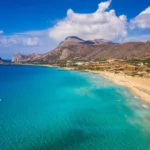
- Stalida beach
- Sand
- Shallow
- Blue
Stalida Beach (or Stalis) is located 30km east of Heraklion, between Malia and Hersonissos. Originally a small seaside village formed by the inhabitants of Mochos, it has now evolved into a bustling tourist destination, harmoniously blending into the neighbouring town of Malia. Stalis caters primarily to families seeking a tranquil retreat, and is beautifully equipped with a range of accommodations, eateries, bars, and taverns, not to mention an ATM and a pharmacy for convenience.
Stalida makes for a perfect base to explore the nearby attractions and engage in an array of activities. The locality is teeming with stunning beaches, enriching archaeological sites, and captivating cultural spots. A short 6km trip from the beach takes you to the Aquaworld Aquarium & Reptile Rescue Centre – a place where you can acquaint yourself with a variety of marine creatures and reptiles. Nearby, the Lychnostatis Open Air Museum offers a deep dive into Crete’s natural history and culture.
For those seeking aquatic thrills, the Acqua Plus waterpark, the island’s largest, is not far from the coastline. To the west, beyond Malia and Potamos Beach, lies the Malia Palace Archaeological Site, home to the third largest Minoan palace complex and steeped in millennia-old history. A further 20km south, the ancient Minoan settlement of Karfi offers another slice of history, believed to have been home to around 3,500 inhabitants.
For those with a passion for hiking, the Bulgarian trail, starting from Stalis and leading up to Mohos, is a must. Named after the Bulgarian prisoners of war who constructed it during WWII, this 5km trail, though lengthy and ascending, is an experience in itself. Along the way, you’ll cross a pedestrian bridge spanning the highway and encounter the contemporary Panagia Theogenitor Monastery. Once in Mohos, enjoy a leisurely stroll along narrow lanes, relax with a coffee in the spacious square, and enjoy the warm company of the locals. You can choose to return via the same trail or follow a different one leading from Mohos to Malia.
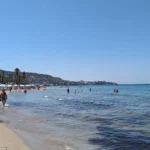
- Karteros beach
- Sand
- Shallow
- Blue
The Karteros Bay, situated at the exit of the synonymous Karteros Gorge, lies 7km east of Heraklion and stretches 3.5km to the east. It pays homage to the Byzantine General, Krateros, who in 824AC attempted to liberate Crete from the Saracens by landing his ships on the bay’s beach, but unfortunately, he was defeated. The bay encompasses two villages, Karteros and Amnissos, which have now merged due to the area’s rapid evolution. The area’s development can be attributed to its proximity to Heraklion and the presence of an exquisite beachfront featuring fine golden sand.
You’ll find numerous hotels, eateries, and beach bars in close proximity to the bay. Karteros Bay is exposed to the northern winds, and as a result, the water tends to be wavy. The water is shallow with almost no rocks, except for a few areas. The least crowded part of the beach is situated next to the “Nikos Kazantzakis” airport, 7km west of Heraklion, known as Florida. This part got its name from an old tavern that no longer exists and is the most serene of all the beaches. Compared to the easternmost beaches, Florida has fewer umbrellas and facilities. The river from the Karteros Gorge empties into Florida, creating a small wetland on the beach, which dries up during the summer. It’s certainly worth a visit, especially in the spring.
While in Florida, you should stop by the old Church of St. John and St. Nikon Metanoite, constructed within a large cave. Moreover, don’t be startled if you spot horses on the beach as it’s home to the Heraklion Riding Club.
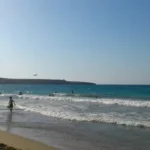
- Almyros beach
- Sand
- Shallow
- Blue
Almyros beach (Almiros) is located 2.5km south of Agios Nikolaos and 12 km from Elounda. It is shaped near the exit of Almiros River, which empties on the south part of the beach. Next to the beach, the protected wetland of Almiros hosts several rare birds, towering eucalyptus trees, reed and some palm trees.
The beach is quite long – 300 m – and very well-organized. It is sandy and the water is shallow and usually calm, making it ideal especially for young children. There are a lot of trees behind the beach, and to the east, you can see the pretty Thrypti Mount. The entrance to the water is very smooth. This beach is suitable for different categories of people, lonely travellers, relaxation getaway lovers, families with children, seniors etc. It is partially crowded during the high season. The area has a few canteens, while there are also many options for water sports. The sea water is very cold in some places due to the river that flows all year round. On the south side of the beach, there are small hotels and apartments.
To reach the beach from Agios Nikolaos city centre, if you do not have a car, you should walk the pedestrian street (5 ‘) which runs along the rocky coasts north of the beach. The pathway starts from Gargadoros beach, which is located 5 minutes south of the town’s marina.
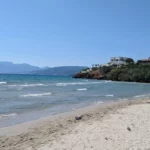
- Ligres beach
- Fine Pebbles
- Normal
- Blue
Situated 51km to the south of Rethymno and 7km below the village of Kerames, Ligres is nestled at the base of the grand Siderotas mountain. It forms the northern segment of the Akoumiani Gialia beachfront, which runs from the cape of Mellissa to the south.
Ligres is an expansive beach graced with rough sand and a spectacular deep sea. Its somewhat challenging access has thankfully deterred the encroachment of tourism, preserving it as one of the most serene, secluded and pristine beaches on the island. Although the beach is not developed, there are a few taverns and rooms available on its western side accessible via a poorly maintained asphalt road. At the beach’s western tip, there is a stunning waterfall that boasts a year-round water supply, cascading right next to the sea.
Beyond the northern end of the beach, also known as Katsouni, lies a secluded beach favored primarily by nudists. Despite its seclusion, there are numerous spots along this vast, uninhabited beach where nude swimming is possible. It’s worth venturing along the beachfront to Triopetra, up to the Xiromilia area, to marvel at the astonishing rock formations. In the heart of Ligres, a remarkable reddish boulder stands out near the sea.
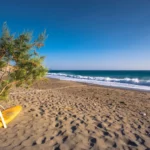
- Agia Fotia beach
- Fine Pebbles
- Normal
- Deep blue
The beach of Agia Fotia is situated 45km southeast of Agios Nikolaos and 12km east from Ierapetra. It’s a small bay nestling at the outlet of a stream flowing down from the Thripti mountain. The name of the settlement is derived from the local Church of Agia Fotini, also known as Agia Fotia. The stream is cloaked by enormous plane trees, while the bay is encircled by conglomerate cliffs, adding to the enchanting landscape.
This beach is well-known and a favourite among the inhabitants of the city of Ierapetra. Its shores are covered in coarse greyish sand, while the water is crystal clear and tranquil. The beach is well-equipped with amenities including beach bars, taverns, and hotels. There are tamarisk trees on the beach where one can find shade. Additionally, beach volleyball tournaments are hosted annually at the local court, a recent tradition that has added to its popularity.

- Myrtos beach
- Fine Pebbles, Sand
- Normal
- Blue
Myrtos, a quaint seaside village, lies 13km west of Ierapetra where the River Kryos meanders through the stunning Sarakina Gorge and into a valley abundant with greenhouses and citrus groves. Despite recent mild development, Myrtos has retained its traditional charm. Its appealing beaches, characterized by coarse grey sand that doesn’t stick to the skin, have amassed a global following. The village offers small hotels, bars, cafes, restaurants, supermarkets, a gas station, and a clinic, in addition to a nearby pharmacy and accessible bus route to Ierapetra.
The extensive beach, considered among the finest in southern Crete, is ideal for serene family vacations as it’s sheltered from strong winds. According to locals, Myrtos is where the wind never rages. The beach is well-equipped with lifeguards, umbrellas, showers, changing rooms, cafes, restaurants, water sports, and beach volleyball. As you head west, the beach widens and offers even more tranquility.
Take a leisurely stroll around Myrtos’ local harbor or wander through its traditional narrow streets filled with lush gardens and homes that echo Aegean landscapes. The surrounding nature and gorges are also worth exploring. Notably, you can visit two Minoan settlements, Fournou Korifi (near Nea Myrtos) and Pirgos (on the east shores of the River Kryos), which were uncovered during excavations. The Archaeological and Folk Art Museum of Myrtos, situated next to the old church of St. Anthony, is a point of interest. Lastly, a monument in the village commemorates the 18 victims who were executed by the Nazis in 1943 as retribution for the deaths of two Germans in the neighboring village of Symi.

- Sitia beach
- Sand
- Shallow
- Blue
Situated 64km east of Agios Nikolaos, Sitia is the furthest city to the east on the island of Crete. In the broader region of the Sitia province, there are numerous petite beaches that offer a delightful combination of sun and sea. For those who enjoy staying near the urban area, the city’s long beach is an attractive option. Situated to the east of the city, Sitia beach stretches from the port all the way to the Petras area. The beach, largely composed of sand with some pebbles scattered here and there, has shallow waters. It is well-equipped with amenities such as umbrellas, showers, lifeguards, beach/water sports, and beach bars. However, quiet spots can be found along its extensive shoreline, particularly towards the east. The east side also accommodates campervans and is dotted with a few trees.
Beyond the Petras area to the east, you can explore the ruins of an ancient city at Trypitos Cape, alleged to be Itia, the hometown of the Wise Myson. Moreover, archaeologists have discovered remnants from various phases of the Minoan era in Petras. West of Trypitos’s archaeological site, another small beach named Karavopetra is located. This name translates to “Ship Stone”, inspired by the sea boulder where ships would traditionally anchor.
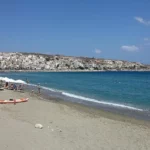
- Fragokastelo beach
- Sand
- Shallow
- Blue
Frangokastello, meaning “Castle of the Franks”, is a renowned beach in Western Crete, steeped in history and folklore due to its age-old Venetian castle and the intriguing legend of the Drosoulites ghosts. This beautiful beach lies in a valley at the foot of the White Mountains, situated 13km east of Hora Sfakion and 80km southeast of Chania.
Fragokastelo’s main beach is an appealing spectacle with its sandy shoreline and shallow turquoise waters, a perfect setting for children and families. Despite being well-equipped with amenities and buzzing during the summer months, the beach is sometimes subject to bothersome northern winds that sweep the sand. However, the area boasts plenty of accommodations, dining options, shops, and an ATM, with the nearest hospital located in Sfakia.
To the west of the main beach, the expansive Vatalos beach and a significant wetland (in winter) offer a different experience, with a mix of sand, pebbles, and rocks perfect for snorkelling. A short 300m walk to the east from the main beach leads you to the breathtaking Orthi Ammos beach, renowned for its sand dunes.
Accessing Fragokastelo from Crete’s northern coast requires a drive along the National Road connecting Chania and Heraklion, exiting at Vrysses and following the road to Chora Sfakion (Sfakia). This route takes you across the Askyfou plateau and through the stunning Imbros Gorge to the southern coast of the Sfakia province. Fragokastelo is well-signposted from here, and the journey typically takes around 1 hour and 20 minutes. If you’re coming from Rethymnon, take the road to Plakias, then head east to Rodakino before reaching Fragokastelo. This drive is around one hour and provides a less challenging but also less scenic route than through the Imbros Gorge. Alternatively, buses to Fragokastelo are available from Chania.
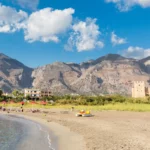
- Potamos beach - Heraklion
- Sand
- Shallow
- Blue
The primary beach of Malia, situated in the heart of the town, is often teeming with visitors. As a result, those seeking a break from the hustle and bustle tend to head towards the sandy stretches to the east of Malia’s port, conveniently located near the Palace of Malia. The most easterly of these beaches is named Potamos (meaning River), due to a small stream that flows along its eastern edge, adjacent to Malia’s wetlands.
Potamos is a lengthy, sandy expanse that is well maintained, yet typically less populated than Malia’s main beach. The eastern portion of the region remains relatively untouched due to its archaeological significance. However, to the west of the beach, a number of hotels can be found, each boasting its own sandy cove.
The Malia Swamp is a wetland of unparalleled ecological importance, home to an expansive reed bed that provides habitat for numerous bird species. This area also preserves several types of coastal vegetation that have been lost elsewhere on Crete. The entire area is irrigated by water that flows from Mount Selena, forming a stunning river in the winter months, mere meters from the shore, resulting in crystal clear waters that feed into Potamos beach. The sea here is so fresh, locals can even drink from it! It’s not an uncommon sight to see goats descending from the mountain, swimming in the sea and drinking the water due to its fresh scent. Surrounding Potamos are smaller sand dunes, which come autumn, are adorned with stunning white sand lilies.

- Gouves beaches
- Sand
- Shallow
- Blue
Kato Gouves, often referred to as Gouves, is a sought-after holiday destination nestled 18km east of Heraklion, at the base of Mount Ederi. Historically, the valley of Kato Gouves was a fertile ground for vegetables, olives, and cereals, cultivated by the inhabitants of Ano Gouves. Today, it’s been transformed into a tourism hub, featuring numerous hotels. Unlike the bustling resorts of Malia and Hersonissos nearby, Gouves offers a tranquil vacation experience, making it an ideal spot for families and the elderly. The sandy beaches here are loved by families, and are conveniently close to all necessary amenities.
Gouves beach is well-equipped with facilities such as umbrellas, sunbeds, lifeguards, water sports, and diving centres, alongside showers and changing rooms. The sea, featuring fine sand and shallow waters, is exposed to the common north winds. As a result, there are several small piers and marinas in the vicinity where you can enjoy a swim, shielded from the waves. The coastal road of Gouves runs parallel to the coastline, simplifying the task of locating your perfect beach spot! Enjoy an evening stroll on this road while admiring the sunset. The road also boasts numerous cafes and restaurants, offering panoramic sea views. Furthermore, Gouves’ main road houses a number of supermarkets, shops, pharmacies, clinics, and ATMs.
One must-visit spot is the Church of St. Constantine, nestled in a quaint pine forest adjacent to the sea. Its picturesque seaside location makes it a popular wedding venue, especially for couples from Heraklion. If your visit falls on a Saturday, you’re likely to witness a traditional Greek wedding or baptism. Beyond the shoreline, 2km to the north, lies the village of Ano Gouves. Its narrow streets, churches, and coffee shops exude a traditional charm. Further north, you can explore the Cave of Agia Paraskevi near the village of Skotino. To the east, Mount Ederi stands tall, home to radars used by the Americans for the operation of the erstwhile US air base in Gournes.
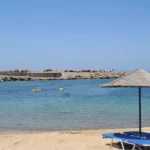
- Stalos beach
- Sand
- Shallow
- Blue
Situated 7km west of Chania, nestled between Kalamaki and Agia Marina, lies Stalos. This well-developed location magnetizes a significant amount of tourists each summer. The coastal region of Stalos, known as Kato Stalos, boasts a stunning sandy beach that is not only well-equipped but also provides all necessary touristic amenities. This makes it a yearly recipient of the coveted blue flag award.
Situated 150m to the south is Pano Stalos, a charming traditional village that is enveloped by lush green hills and striking rock formations.
Stalos serves as a perfect holiday destination due to its proximity to the city of Chania and its ability to cater to all the needs of its visitors. There are also frequent bus services to the city of Chania.
The name ‘Stalos’ is steeped in Cretan mythology, believed to be derived from Talos, a bronze giant who guarded the island from enemies by circling it thrice daily. Legend has it that Talos had his base in Stalos. However, it is more likely that the name ‘Stalos’, originates from the Greek verb stalizo, meaning to stop for rest. This is where local shepherds would halt with their flocks for rest, hence the English word ‘stall’ shares the same Greek roots.
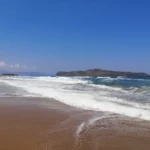
- Platanias beach
- Sand
- Normal
- Blue
Platanias, a coastal hamlet situated 11km west of the city of Chania, has seen a significant surge in tourism in recent years, transforming it from a quaint village into a bustling suburb of Chania. Its close proximity to the city, coupled with its stunning beach and frequent bus services from Chania, have made it the most favoured beach near the city. The original village, nestled on a hillside, offers a breathtaking view of the sea and the islet of Thodorou.
The beach in Platanias is an attractive stretch of sandy shore dotted with hotels of varying class and standard tourist facilities. Beachgoers can avail of all the amenities typical of well-organized beaches, including beach bars, umbrellas, showers, snack bars, lifeguards, and water sports. On the eastern side of the local harbour, near Agia Marina, swimmers can enjoy several small, man-made coves. In the summer, the area’s nightclubs come alive, hosting thousands of both Greek and foreign party-goers who dance until daybreak.
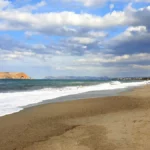
- Damnoni beach
- Sand
- Shallow
- Blue
Situated 35km south of Rethymnon and 5km east of Plakias on Crete island, Damnoni beach is a well-known tourist destination. The resort is fully developed and well-structured, featuring a wide bay with turquoise waters and coarse, whitish sand. Visitors can enjoy numerous facilities including umbrellas, snack bars, showers, changing rooms, and water sports. Additionally, there’s a scuba diving centre, top-notch hotels, restaurants, and a horse-riding centre.
The westernmost part of the beach, which is highly organized, is home to a small river that maintains water nearly all year round. The eastern end of the beach is more serene and connects to the neighbouring Ammoudakii beaches via a short unpaved road. Beyond the western end of the beach, you’ll find several secluded small coves with sand and rocks, located right next to the area’s small harbour.
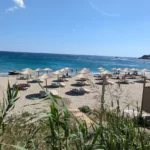
- Chrissi Akti beach
- Sand
- Shallow
- Blue
Situated 2.5km west of Chania city and just east of Agii Apostoli, you’ll find the glistening Golden Beach, or Hrissi Akti as it’s known in Greek. It’s essentially two sandy beaches separated by a rocky outcrop. The western cove is the primary Golden Beach, while the eastern one is the quieter Aptera beach. The west bay is the more popular of the two, boasting excellent facilities such as umbrellas, lifeguards, showers, cafes, water sports and more. Its fine golden sand and shallow waters are particularly appealing to families with young children, and there’s even a playground nearby.
Aptera beach, on the other side of the rocky divide, offers a more tranquil experience. It’s less developed and has the remnants of the Aptera Beach hotel which was abandoned in the late 90s due to financial difficulties. This beach is perfect for those looking for solitude and is conveniently close to Chania.
The entire Agii Apostoli area is dotted with small parks filled with pine and eucalyptus trees. Access to Golden Beach is easy, either by bus from Chania or by foot.
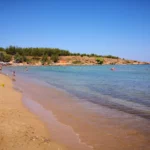
- Sissi beaches
- Rocks in places, Sand
- Normal
- Blue
Sissi, also known as Sisi, is a tranquil traditional seaside village nestled 26km west of Agios Nikolaos and 41km east of Heraklion, not far from Malia. The village is renowned for its natural harbour, characterized by tranquil deep green waters, and its charming taverns nestled within narrow streets. The Sissi coastline is predominantly rocky, with only a few sandy stretches. The sea around here is typically choppy, making the only calm swimming spot the small beach within the harbor (Limani). This petite beach offers a few umbrellas and showers for visitors.
If you desire to explore other beaches, you can travel east to Harkoma bay, home to the well-kept Boufos beach. This sandy beach is exposed to the wind. Adjacent to it, you’ll find the smaller Avlaki beach, situated at the exit of a narrow bay.
Moving further east, you’ll find the sandy Kalimera beach, located in front of the Kalimera Kriti hotel. Managed by the hotel, the beach is well-organized and boasts of shallow waters, making it perfect for children. On the opposite side of the hotel is Spiliada, the last beach within the Sissi territory. Spiliada is a sandy beach shaded by numerous tamarisk trees, offering a more peaceful atmosphere compared to the other beaches.
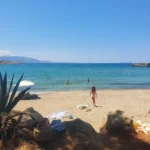
- Nea Chora beaches
- Rocks in places, Sand
- Shallow
- Blue
Nea Chora, a picturesque sandy beach, lies just a kilometer west of Chania city center along Akti Papanikoli Street, opposite the Lazaretta islet. A short 15-minute stroll from Chania’s old harbor, this beach boasts a well-maintained main area with several facilities at hand. While mostly sandy, Nea Chora also features rocky patches. It’s the perfect spot for those who prefer to stay nearby the city center. East of the beach, you can still spot the old soap factory’s towering chimney and the former sanatorium of Chania. Nea Chora is a favorite among locals for its seafood taverns, but there are also plenty of restaurants, snack bars, and cafes to choose from. Every summer, the beach hosts the “Sardine Festival”, complete with traditional music, dancing, and free fish for attendees.
Kladissos beach
Further along the river Kladisos, a second beach unfolds all the way up to Aptera beach. Kladisos beach is a lengthy sandy bay, interspersed with pebbly areas. Despite its proximity to Chania and its appealing beauty, the beach remains relatively secluded and unspoiled. The simplest way to access this beach is by crossing the Kladisos river via the pedestrian bridge.
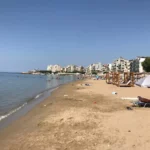
- Melissa Cape Sandhills
- Rocks in places, Sand
- Deep
- Blue
Among the premier beaches in central Crete, the Melissa Cape Sandhills shine bright. Situated near Agios Pavlos, at the southern tip of the expansive Akoumiani Gialia coastline, this stunning location is approximately 55km south of Rethymno city. It’s framed by the beautiful Cape Melissa to the south, the Akoumianos river, and the Triopetra beach to the north. The deep sea here beckons swimmers, and the area’s secluded nature often leads to a variety of beachwear or a lack thereof. Locally, the beach is also known as Alatsogremi or “salt cliffs”.
The Melissa Cape Sandhills, arguably the most scenic beach in the Rethymnon prefecture, boast massive sand dunes nestled amidst a majestic, untouched landscape. A few scattered umbrellas offer shade, although natural refuge can be found in the rocky caves mid-beach. Despite its generous expanse, the beach rarely feels crowded, even allowing for nude bathing during peak season. A rich seabed makes it a snorkelling hotspot, although visitors should be aware of the frequent large waves due to western winds. The water temperature remains warm year-round, hardly dropping below 15 degrees Celsius, perfect for winter swims.
The area is famed for its breathtaking sunsets, providing a serene backdrop for a thriving yoga and Tai Chi club that boasts world-class trainers. The best view of the sunset can be found atop Thronos peak, overlooking the beach from towering cliffs. To reach it, follow the dirt track next to the junction of Agios Pavlos – Sactouria and Triopetra-Agios Pavlos roads, then hike to the cliff edge. This vantage point offers sweeping views of Paximadia islets, Gavdos Island, and the White Mountains.
Access to the Sandhills is straightforward. Head west from Triopetra harbour (Stomio) for about 500m until you reach the beach on your right, with the Akoumianos river below. Park your vehicle here and make your way down to the beach through the valley near the river. Alternatively, you can park in Agios Pavlos and take the short 5 to 10-minute trail behind the western edge of the Agios Pavlos beach, which descends down a steep sandy slope.
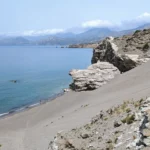
- Zakros beach
- Fine Pebbles
- Normal
- Blue
Kato Zakros, a quaint fishing village, is nestled 107km east of Agios Nikolaos and 40km east of Sitia. It serves as the scenic port of Ano Zakros village, which is located 7km to the west, amidst a fertile valley bordered by rugged mountains and lush olive groves. This remote corner of Crete provides the perfect escape for those seeking tranquillity and an escape from the bustling city life, making it a favourite among families.
The village, though small, offers all the fundamental amenities without the trappings of luxury. The villagers primarily focus on the production of world-class olive oil. Rich in archaeological sites, including the renowned Minoan palace of Zakros, the village retains its natural beauty with limited construction. However, you will find a few accommodations, taverns, mini markets, pharmacies, and petrol stations. Regular bus services from Sitia also connect the village. The warm and welcoming locals will make you feel right at home.
The serene beach fringing the village is nestled within a large protected bay. Comprising mainly pebbles and occasional rocks, the beach boasts tranquil waters, offering a peaceful retreat even during the busy month of August. The rocky seabed is a paradise for fishing enthusiasts.
When in Kato Zakros, the famous Gorge of Zakros, ominously known as Deads’ Gorge, is a must-visit. Named after the many Minoan graves discovered within its cavernous sides, the gorge offers an adventurous hike from Zakros village that takes around two hours. The Minoan palace of Zakros, the fourth largest after Knossos, Phaestus, and Malia, is a significant archaeological site located near the gorge’s exit. It houses numerous artistic masterpieces from 1900BC and is open to the public, with the most significant findings displayed at the Archaeological Museum of Heraklion.
An old dirt road leading to Zakros, offering breathtaking views of the Gorge’s steep cliffs, is worth exploring if you have a car. Upon reaching the village, take a leisurely stroll through its narrow streets and visit its churches. The springs of Zakros, forming a small oasis amidst the wild landscape of Eastern Crete, are also worth a visit.
If time permits, a boat trip (or rigorous hike) to the secluded Cave of Pelekita could be an exciting expedition. As one of Crete’s largest caves, it has traces of Neolithic habitation. A nearby quarry, presumably used by the Minoans for constructing the palace of Zakros, is also an interesting sight.

- Agia Marina beach - Chania
- Sand
- Shallow
- Blue
Agia Marina, a charming coastal town, lies just 9km west of the city of Chania. It’s one of Chania’s most sought-after holiday spots, boasting numerous hotels and a full range of tourist amenities. The town’s name is derived from the local Agia Marina church, which holds its festival on July 17th.
Agia Marina is renowned for its stunning chain of sandy beaches. To the west, near the Platania port, there are several small, man-made piers where swimming is possible. To the east, the beach extends to Stalos, offering a long stretch of sand. A variety of services are available along the seashore, typical of a well-appointed beach.
Around 1.5km south of the town, you’ll find the Nerospilia cave, home to spectacular stalagmites and stalactites. Unfortunately, public access is not permitted due to its location on private property. This cave was a place of worship during the Middle Minoan era. While in Agia Marina, don’t miss a visit to the local folklore museum.
Facing the beach of Agia Marina is the protected island of Thodorou, designated as a nature reserve. It’s a sanctuary for the endangered Cretan wild goats, relocated here from the White Mountains, near Samaria Gorge. While approaching the island is generally forbidden, limited boat tours are sometimes available with special permission from the Forest Service. The island’s small sandy beach in the tiny cove, which doubles as the harbour, offers wonderful views of Agia Marina.

- Ammoudara beach - Heraklion
- Sand
- Shallow
- Blue
Ammoudara, a beach extending 7km west from River Giofyros, located 1km west of Heraklion’s centre, draws in thousands of tourists annually, predominantly due to its expansive sandy coastline. Now a suburb of Heraklion, the beach is known for its unique brownish sand, with a rocky strip about 50m inland signifying the ancient shoreline.
Whether you prefer bustling environments or more private settings, Ammoudara caters to all. The coastline offers organized beaches equipped with sunbeds, umbrellas, beach bars, lifeguards, showers, changing rooms, and a plethora of water sports. Known for its year-round strong winds, Ammoudara is a popular spot for windsurfers. For a quieter experience, the beach’s western area, starting from the Pancretan Stadium and extending east towards the Xeropotamos wetland and dunes, is ideal. River Almiros and River Gazanos’ mouth areas, along with the Ellinoperamata industrial area, also offer peaceful beach spots.
The surrounding locale is also remarkable. The Almyros river spring, Crete’s largest water source, forms the area’s most extensive habitat. Nearby lies the Almiros gorge, an easy location for a leisurely walk. Alternatively, you can opt for a hike up the Stroumboulas mountain, Heraklion’s volcanic-like mountain.
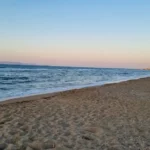
There are no results matching your search.
Reset